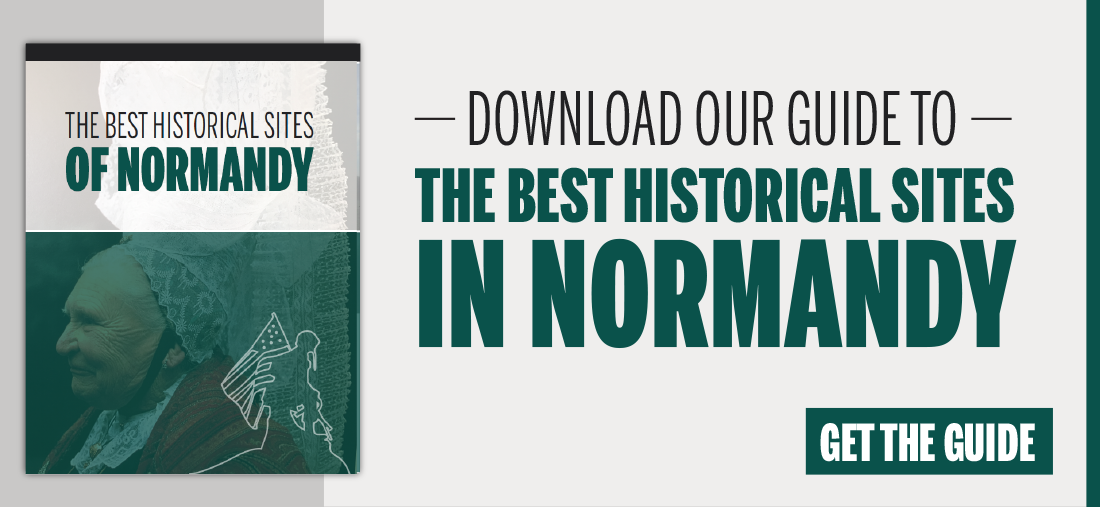Carentan, a charming little town, due to its strategic position, was thru different historical conflicts, a very contested place (written by a trainee of Normandy American Heroes!)
The city, first named Carentomagus was regularly, thru time, besieged and destroyed. First during the Viking incursions, then during the 100 year war. It was fortified by "Blanche de Castile", then dismantled in 1853.
Carentomagus meant the "beautiful market" or the "Carentos market".
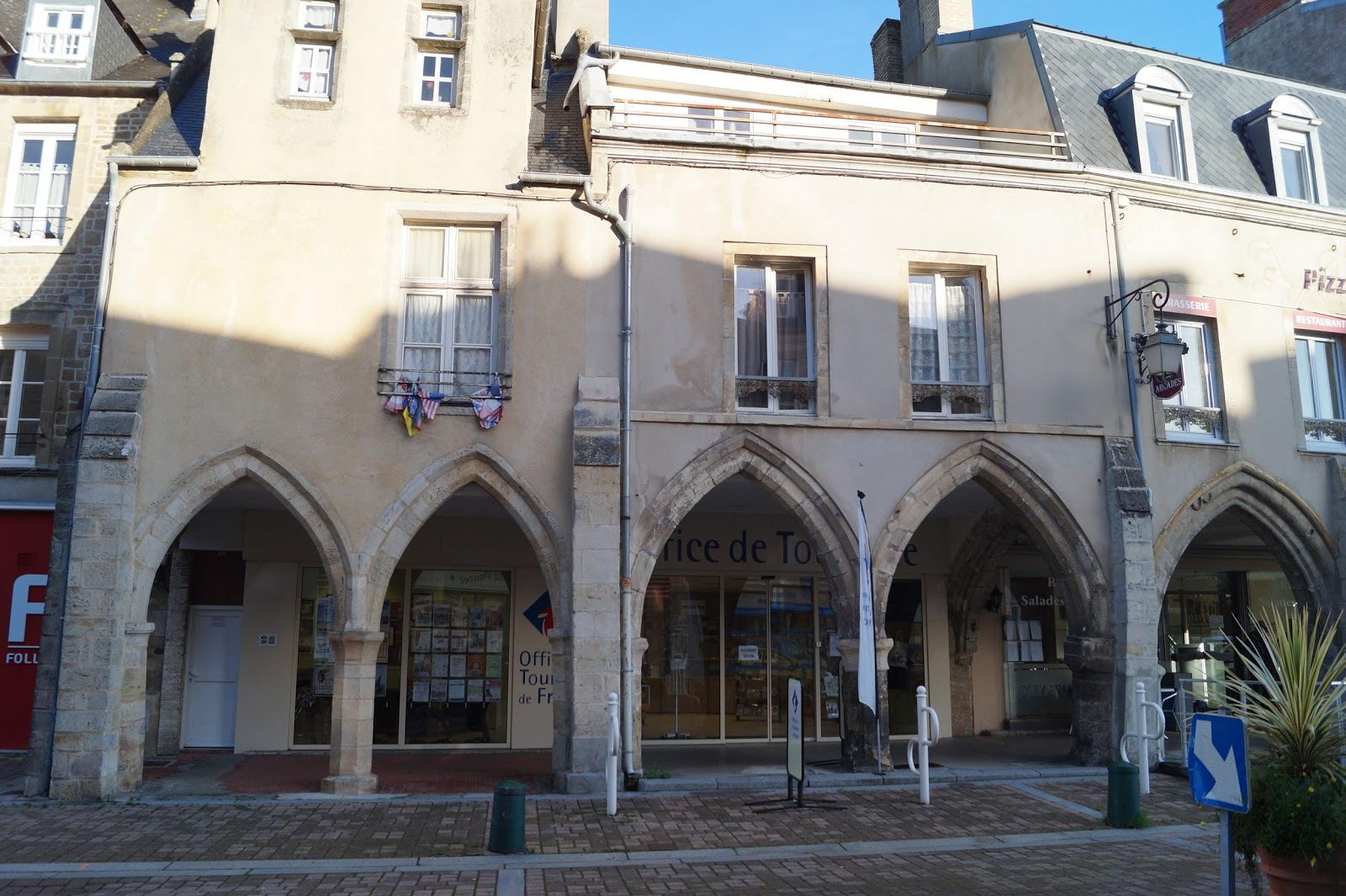
The Medieval arcades of Carentan
The big Gallo-Roman village was later occupied by the Vikings and was then part of the Duchy of Normandy in 933.
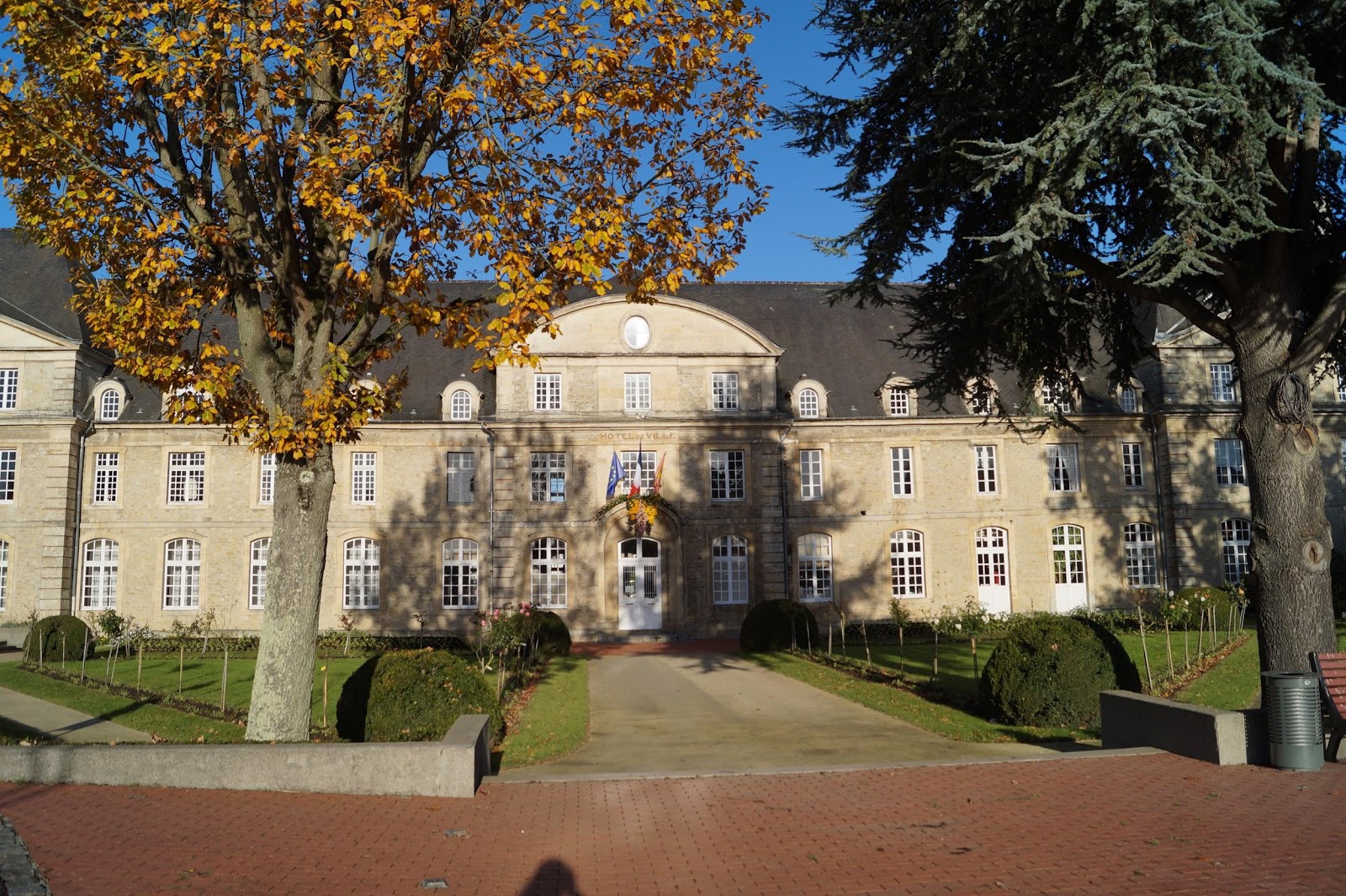
Carentan’s town hall
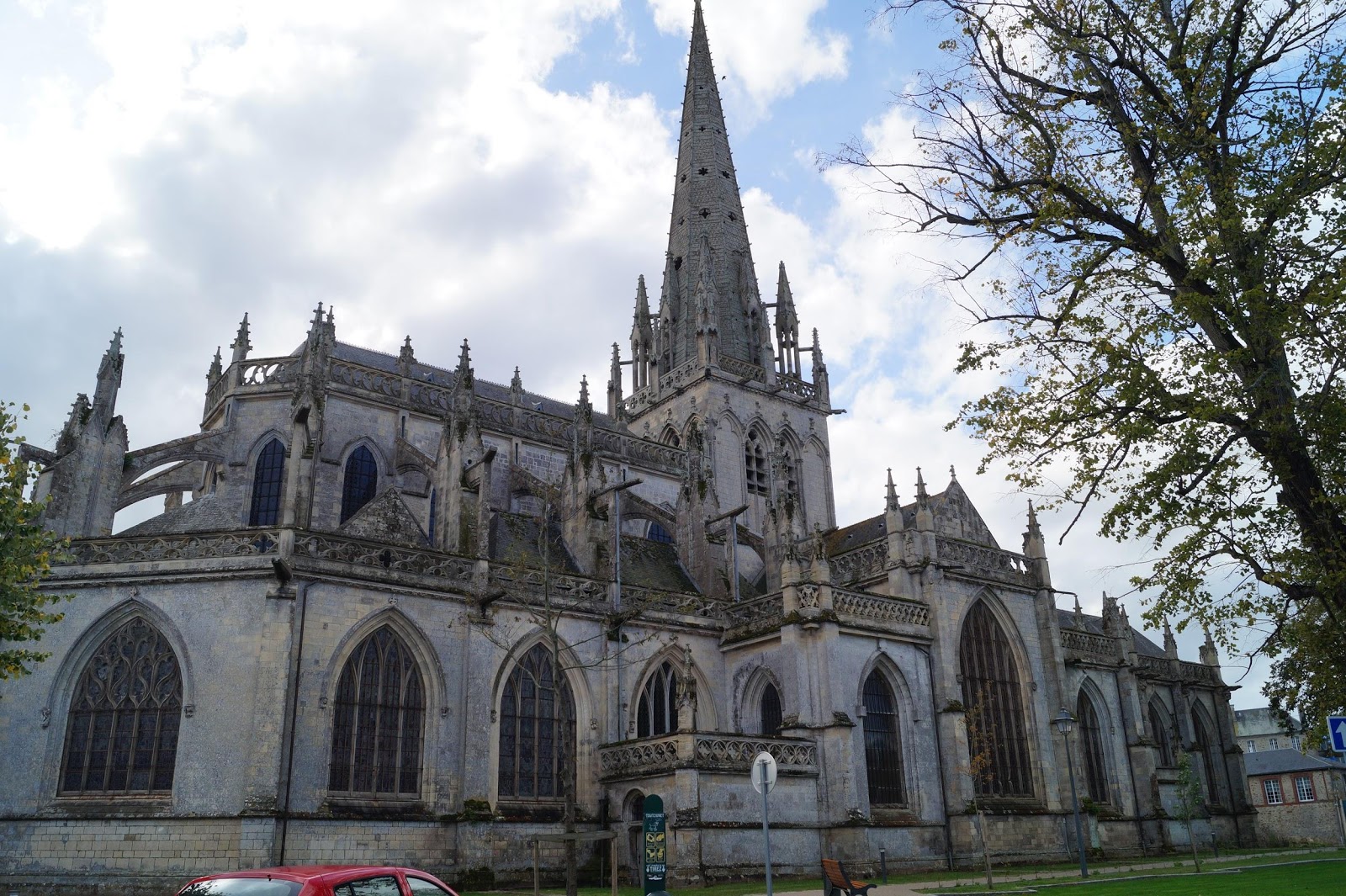
“Notre Dame" church, the original church was built during the 11th century and partially destroyed in 1433.
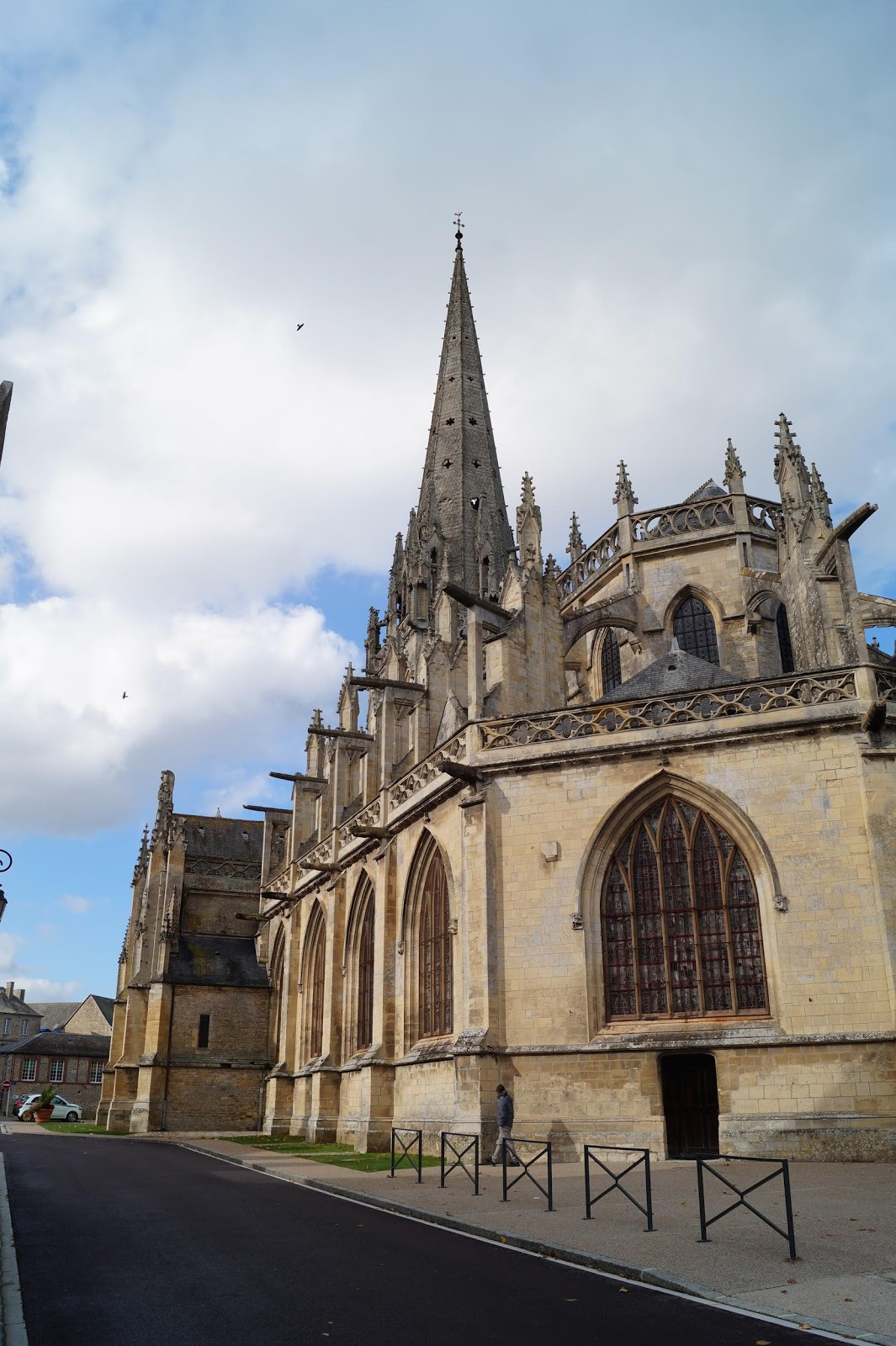
Bailiff "Guillaume de Cerisay" rebuilt it in a flamboyant Gothic style.
Dedicated in 1470, it is 69 meters long and 22 meters wide.
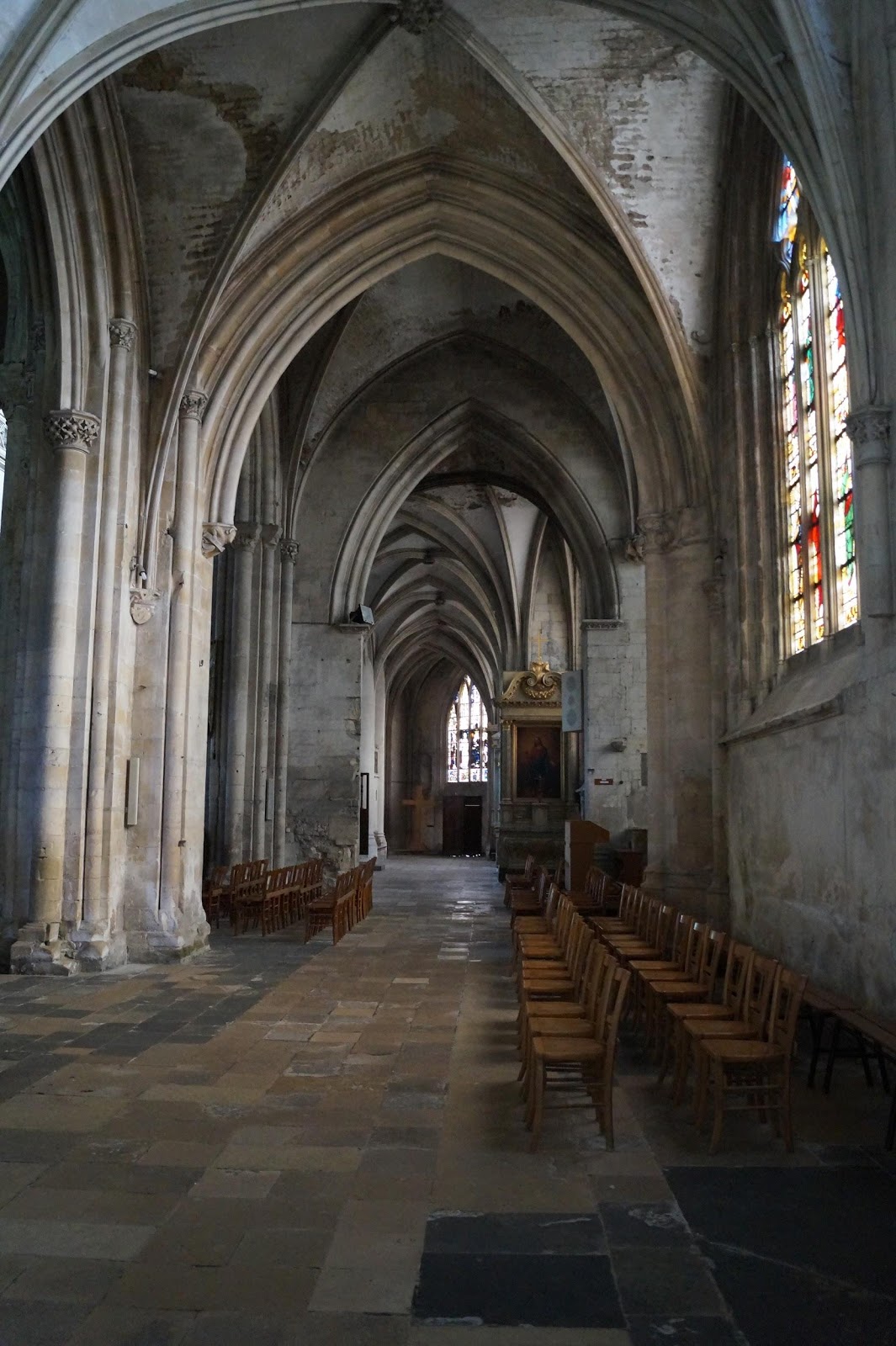
The distinctive characteristic of the church is its architecture and beauty.
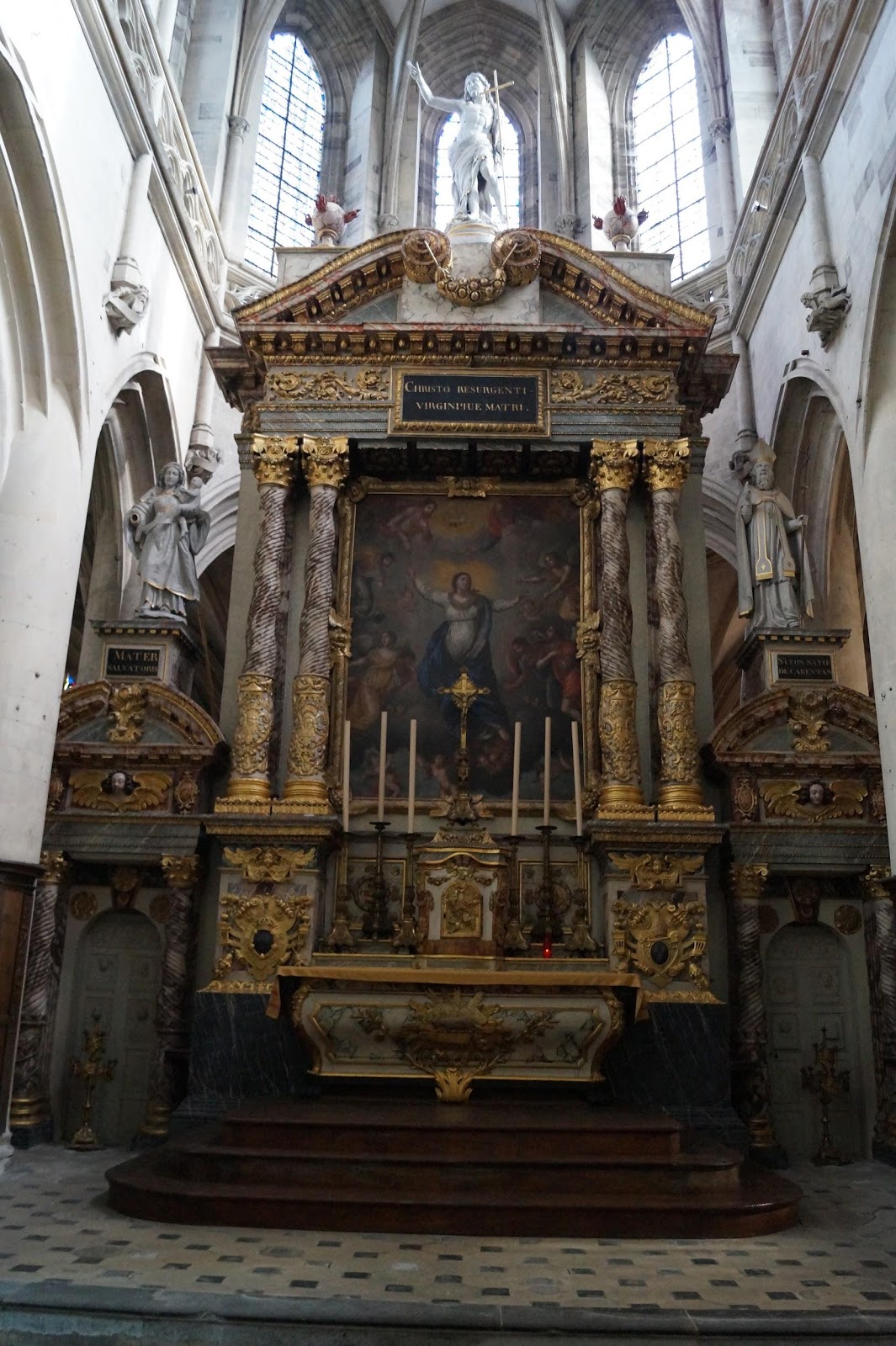
The choir of "Notre Dame" church
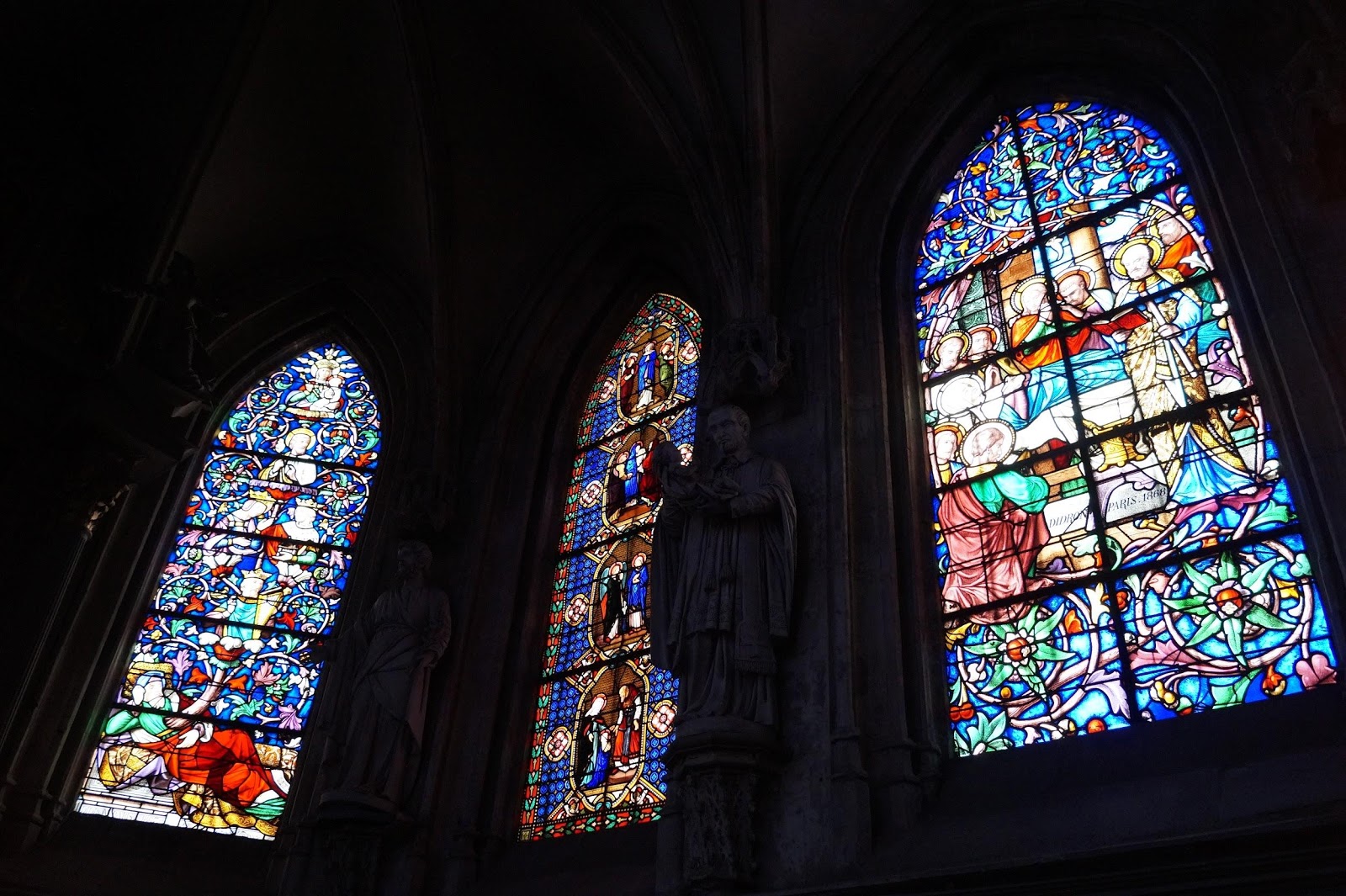
Beautiful stained glasses windows
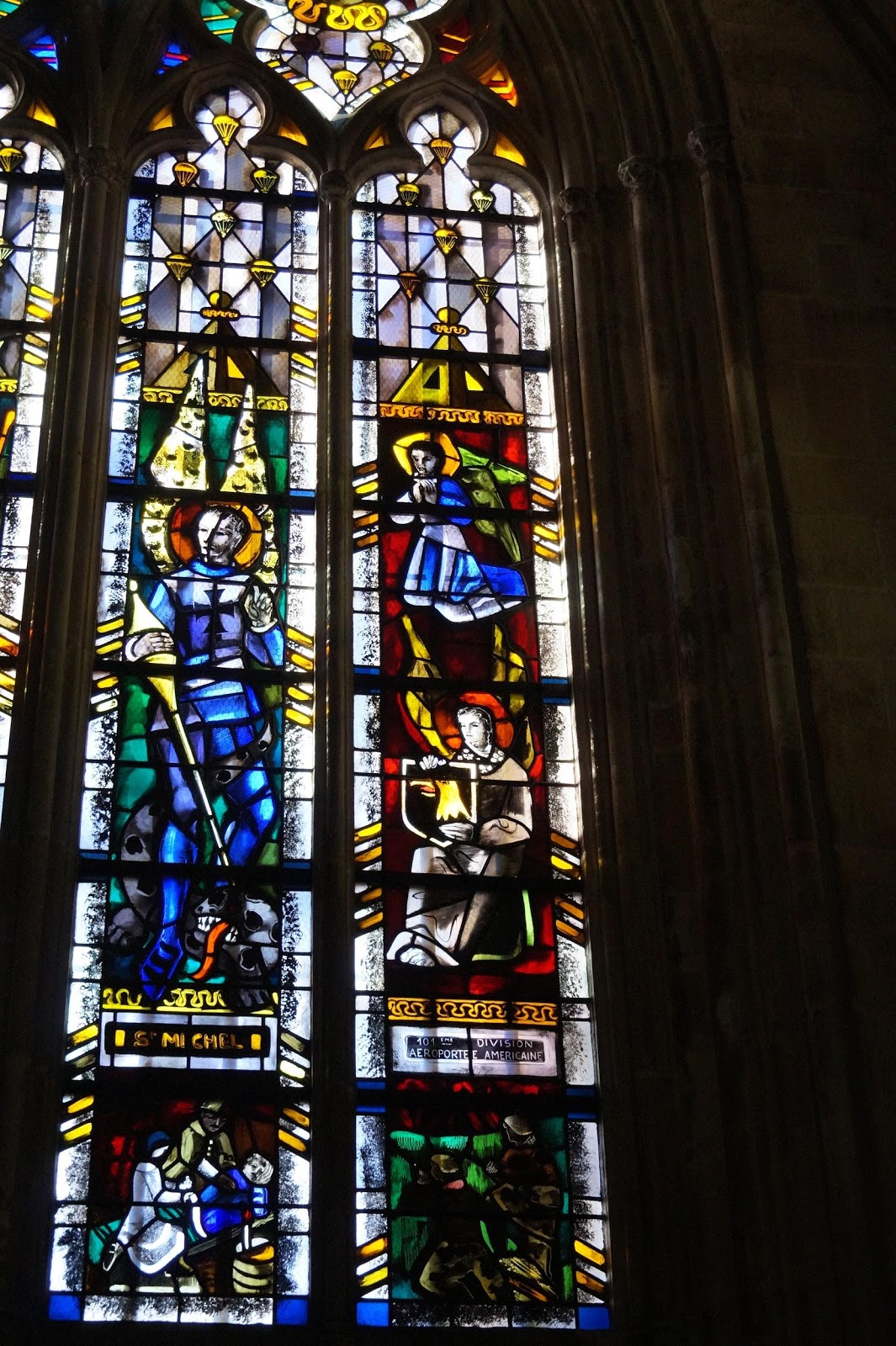
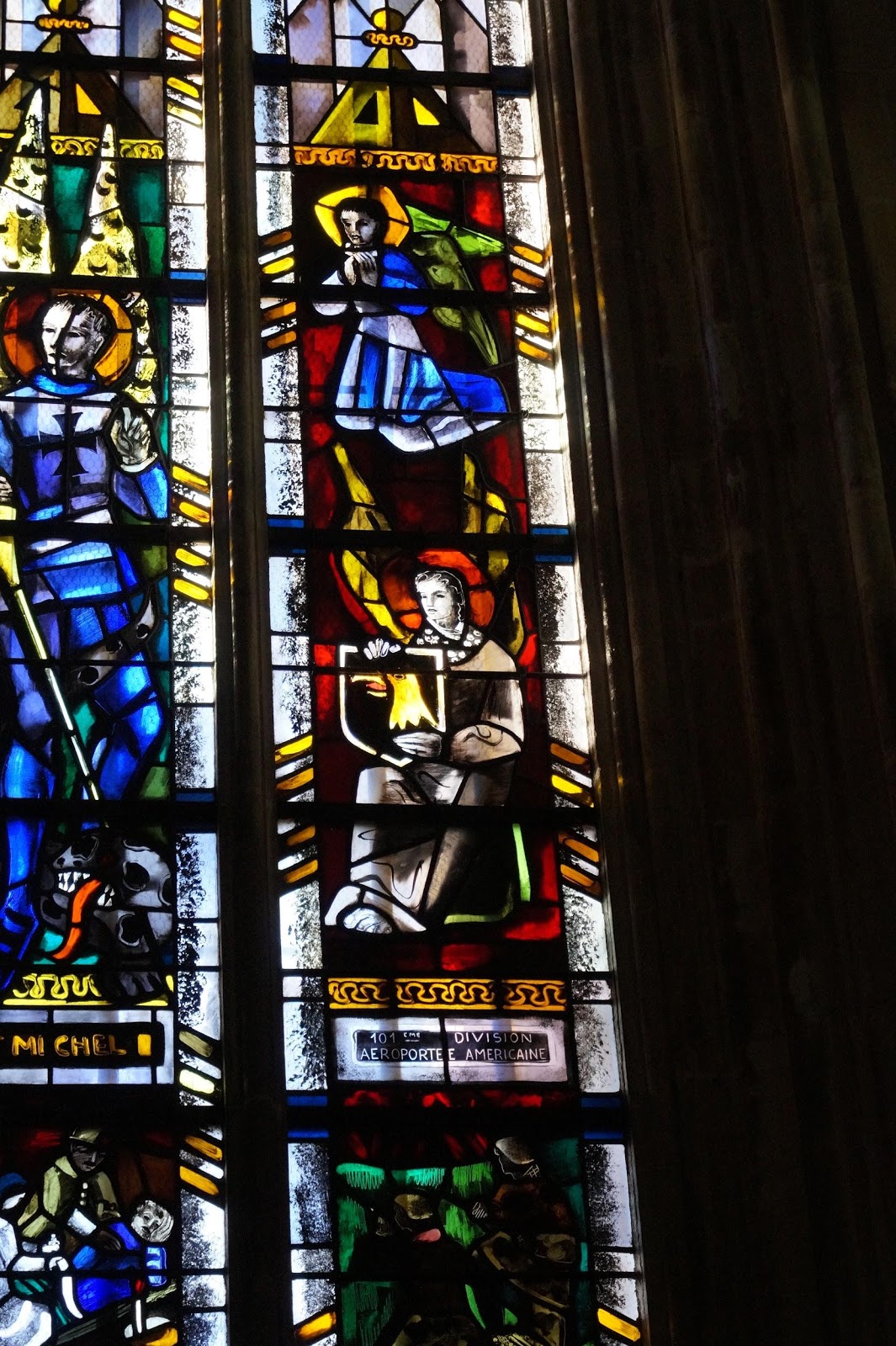
One was made in honor of the 101st Airborne Division, liberators of the city.
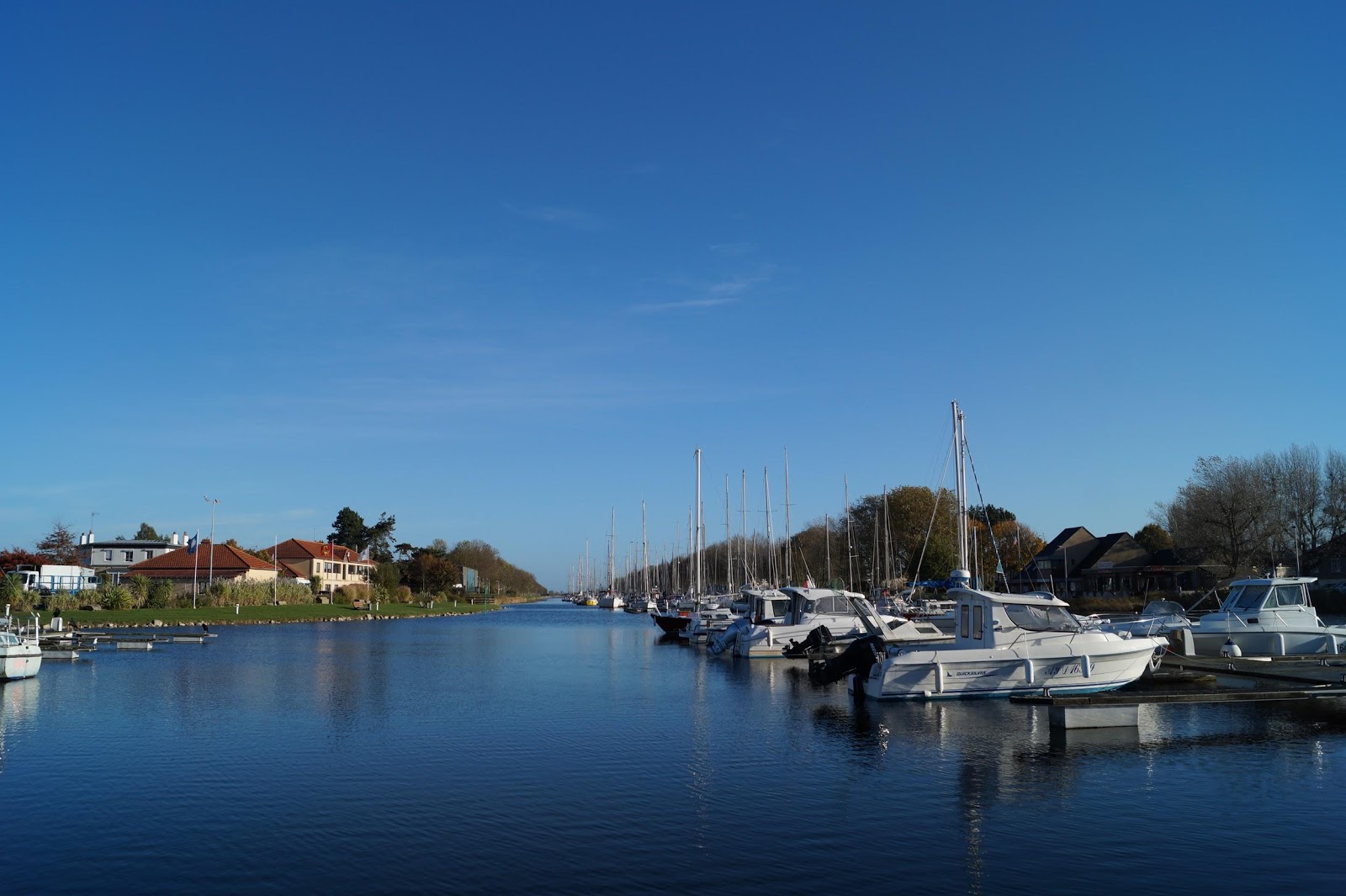
Carentan’s marina
In Carentan there is also a beautiful Marina, the port is an atypical place since it is not located by the seaside.
The canal leads to the "Baie des Veys". It is equipped with a lock that allows boats to easily access the sea.
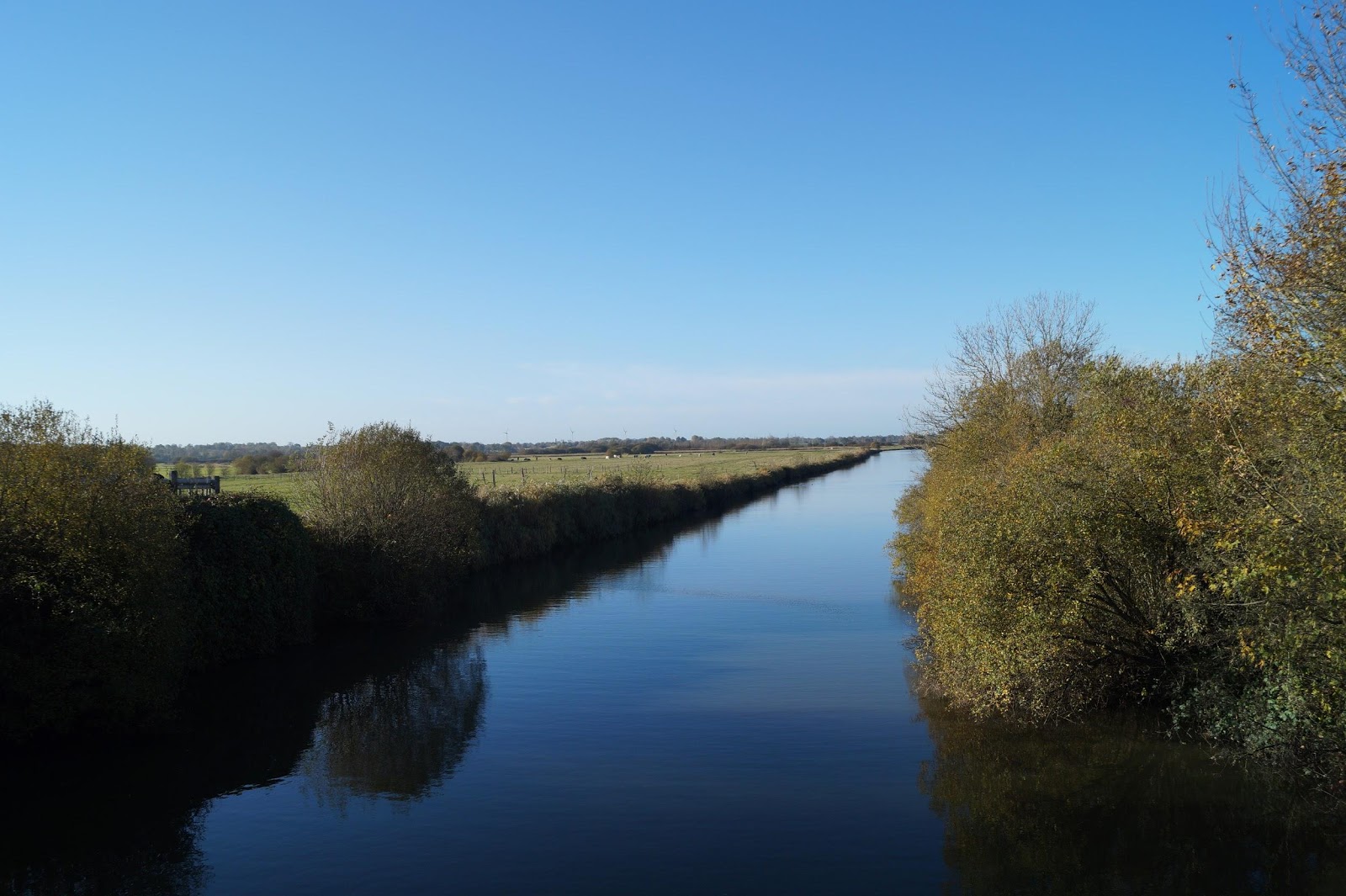
View of the Douve river and the meadows, still flooded by the farmers during the winter
Carentan is located in the middle of vast marshes remediated and transformed into rich meadows, at the confluence of the "Taute" and "Douve" rivers.
Carentan is considered the capital of the marshes, at the gateway of the Cotentin Peninsula and the Veys Bay, in the heart of the The Regional Nature Park of the Cotentin and Bessin Marshes.
D-DAY - CARENTAN BRIDGEHEAD OF OMAHA AND UTAH BEACH
- Carentan, its marshes with four bridges to cross before making it to the town;
- Carentan, with Saint-Côme-du-Mont, defended by the German elite troops of Colonel Von der Heydte, the infamous Fallschirmjäger 6th Regiment, supported by volunteers from the Eastern Front;
- These line of defenses were to prevent the link-up of the US troops coming from Utah and Omaha;
- It had to be taken, no matter what the cost!
General Maxwell Taylor of the 101st Airborne ordered the 506th PIR, reinforced by the 746th Tank Battalion, to attack the village of Saint-Côme-du-Mont held by the German paratroopers nicknamed “The Green Devils”.
In order to take the German paratroopers from the rear, the 506th PIR bypassed the village and reached the main road called RN 13 from the South.
But... it was unfortunately too late. When Colonel Sink of the 506th PIR and his men entered the village on June 8th, 1944, the Germans had already moved back to Carentan.
It is to be taken into account that they are four bridges to cross to reach the North of the city. From the 9th to the 11th of June 1944 the 101st Airborne suffered heavy losses but the paratroopers managed to cross the flooded zone, the four bridges and make it at the doors of Carentan.
During the night of June 11th to the 12th, the allies launched their offensive. As in Saint-Come-du-Mont, elements of the 506th PIR avoided the city which was bombed. The regiment moved to the south to prevent the retreat of the German paratroopers, and was joined in the morning by the 501st PIR.
Meanwhile, the 2nd battalion of the 506th PIR succeeded in entering the city and managed to join the men of the 401st GIR from the East.
Nevertheless, the German paratroopers of the 6th Fallschirmjäger, for the most part, managed to escape from this trap.
Field Marshal Erwin Rommel, in charge of the Atlantic Wall, sent the 17th SS-Panzerdivision from Poitiers. The situation became critical for the men of the 101st Airborne Division who soon were under heavy enemy artillery fire. It desperately needed the support of the 2nd US Armored Division reinforcements to annihilate the enemy counterattack.
On June 11th, 1944, Lieutenant-Colonel Cole (3rd battalion of the 502nd PIR) tried from the North to cross Carentan in order to reach Hill 30, south of the village. In his ranks were about sixty paratroopers of the G Company, 84 of the H Company and 121 of the HQ Company. Split in two columns, the troops arrived near a field and the “Ingouf" farm”.
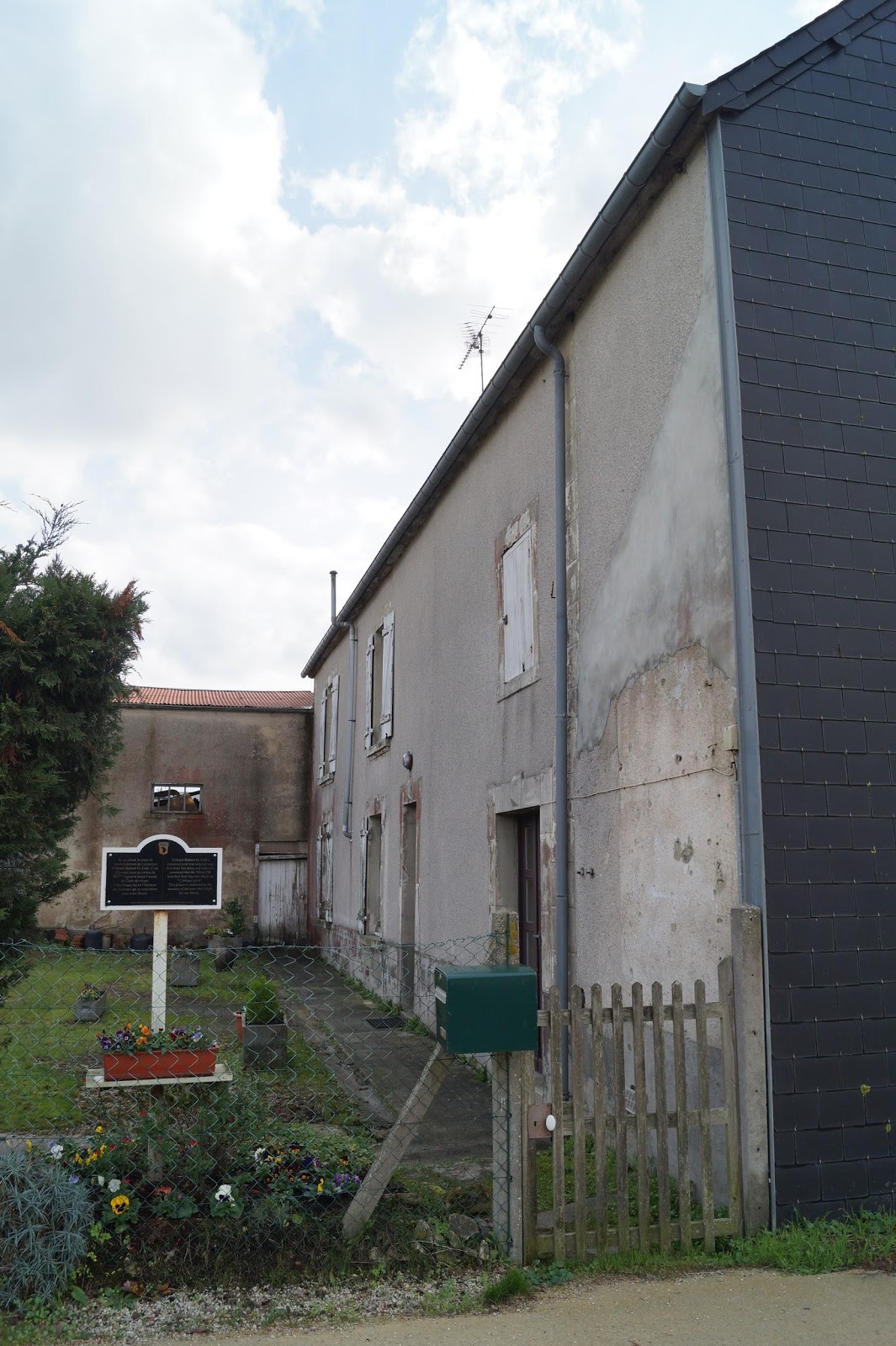
The "Ingouf" farm nowadays, where bullets holes are still visible on the house
In front of the first hedgerows, the paratroopers were under heavy enemy fire and the American soldiers had to wait there. Lieutenant-Colonel Cole ordered the artillery to fire on the farm. The gunners were only able to attack the position 30 minutes later, at 5:30. However, the German paratroopers suffered light damages. Lieutenant-Colonel Cole took the decision suddenly and ordered Major John Stopka to request a smoke bomb shelling. The Ingouf farm was soon under a thick fog.
On the left, the G Company was immobilized under heavy enemy fire. At 6:15, Lieutenant-Colonel Cole ordered his men: “bayonets on rifles” ! When the artillery started shelling the railway behind the farm, Lieutenant-Colonel Cole used his whistle, got up armed with his colt 45 followed only by 21 paratroopers. Behind, Major Stopka gathered his men, without much success. Why? The paratroopers could not hear or understand the orders of the officers covered due to the artillery blasting away!
Lieutenant Colonel Cole encouraged the twenty or so paratroopers who followed him in single line as they had to deploy across the width of the meadow. The Americans reached the first buildings and discovered there dead German soldiers, the others had moved behind the railway.
For his courage and initiative Lieutenant-Colonel Robert G.Cole was awarded the Medal of Honor, American highest military distinction, posthumously... as he was killed by a sniper in Holland on September 18th 1944.
Today a commercial zone has been built on this battlefield, a beautiful memorial commemorates the events.
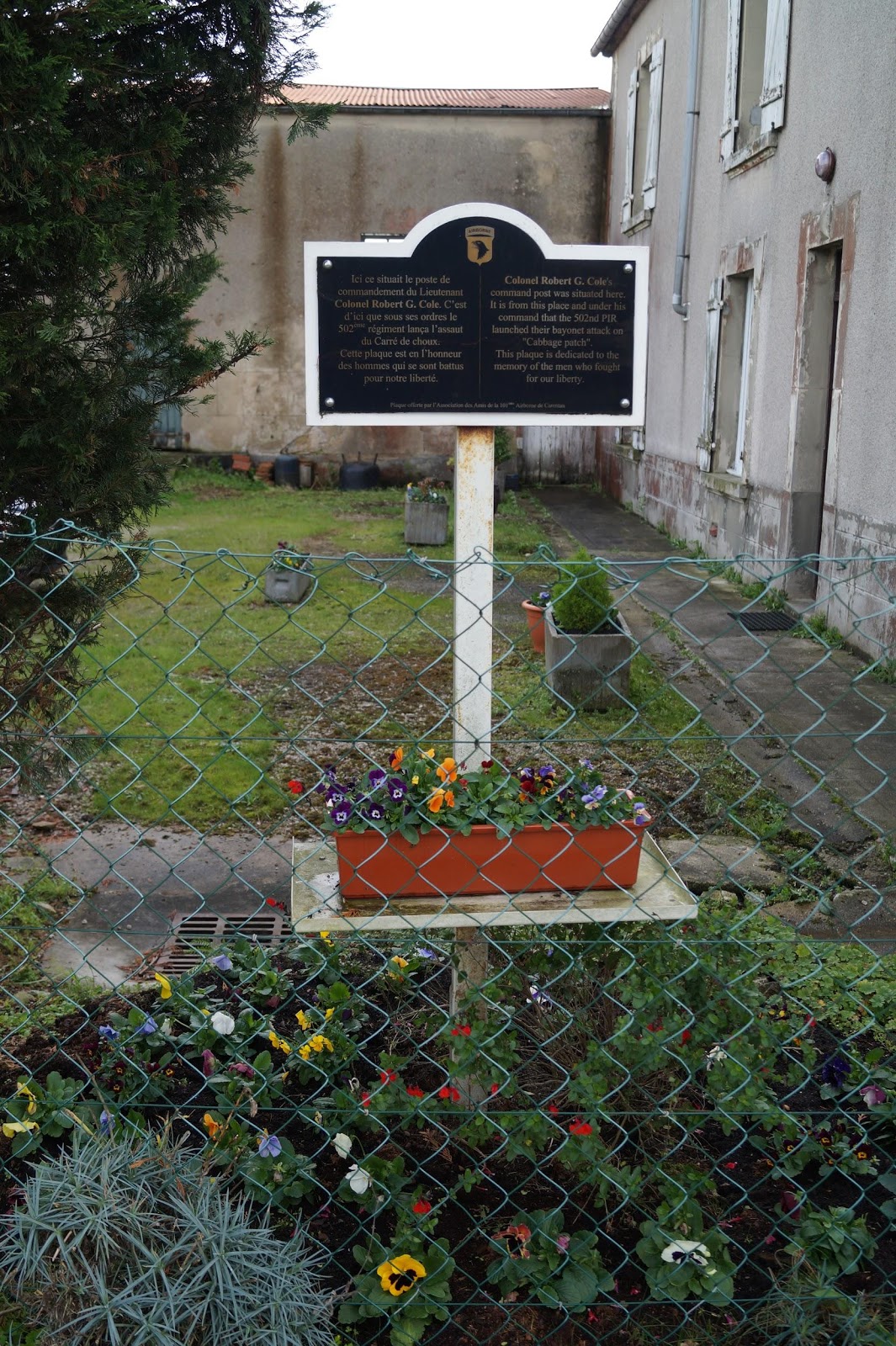
The Ingouf monument in honor of the 101st Airborne
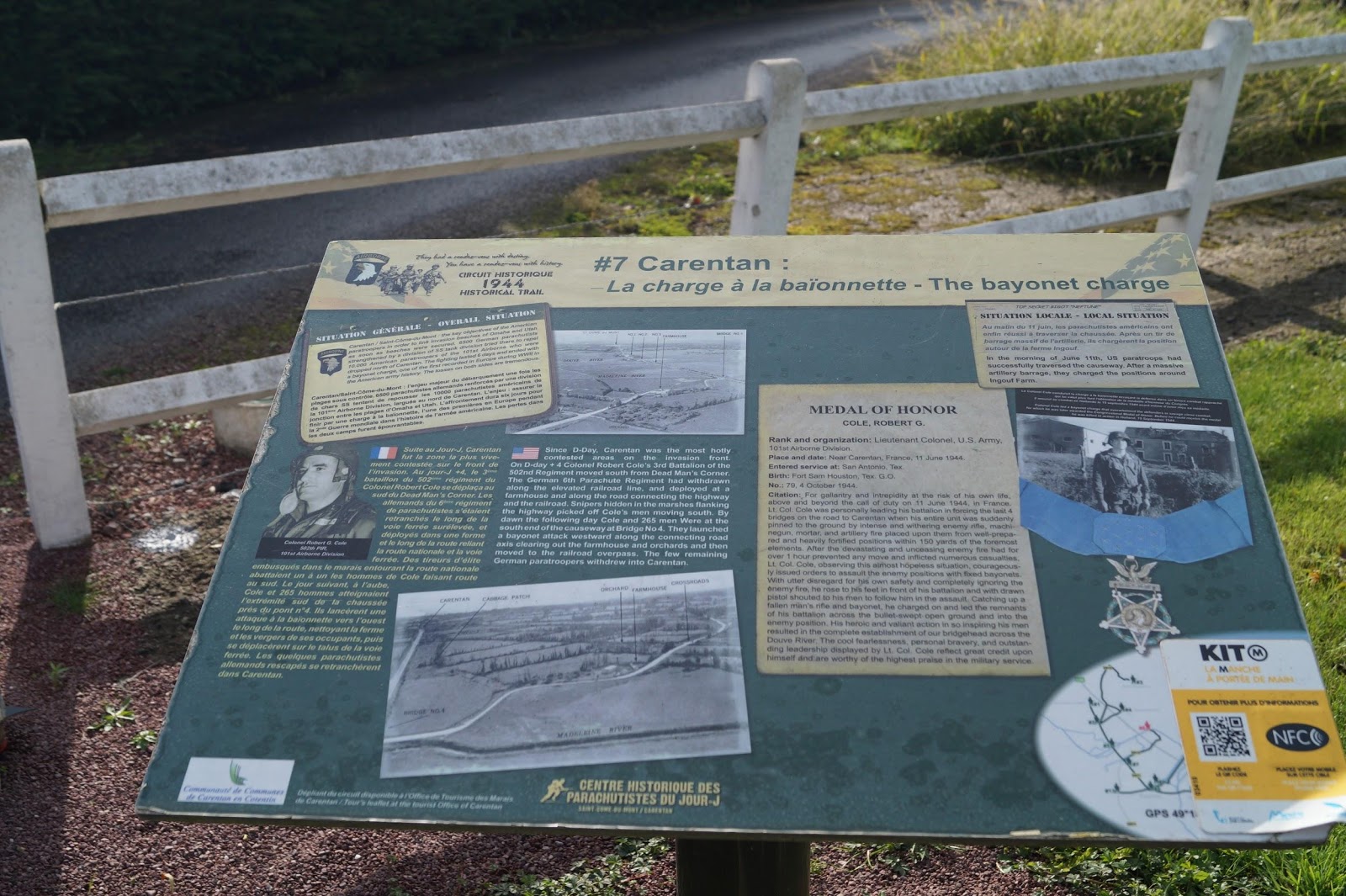
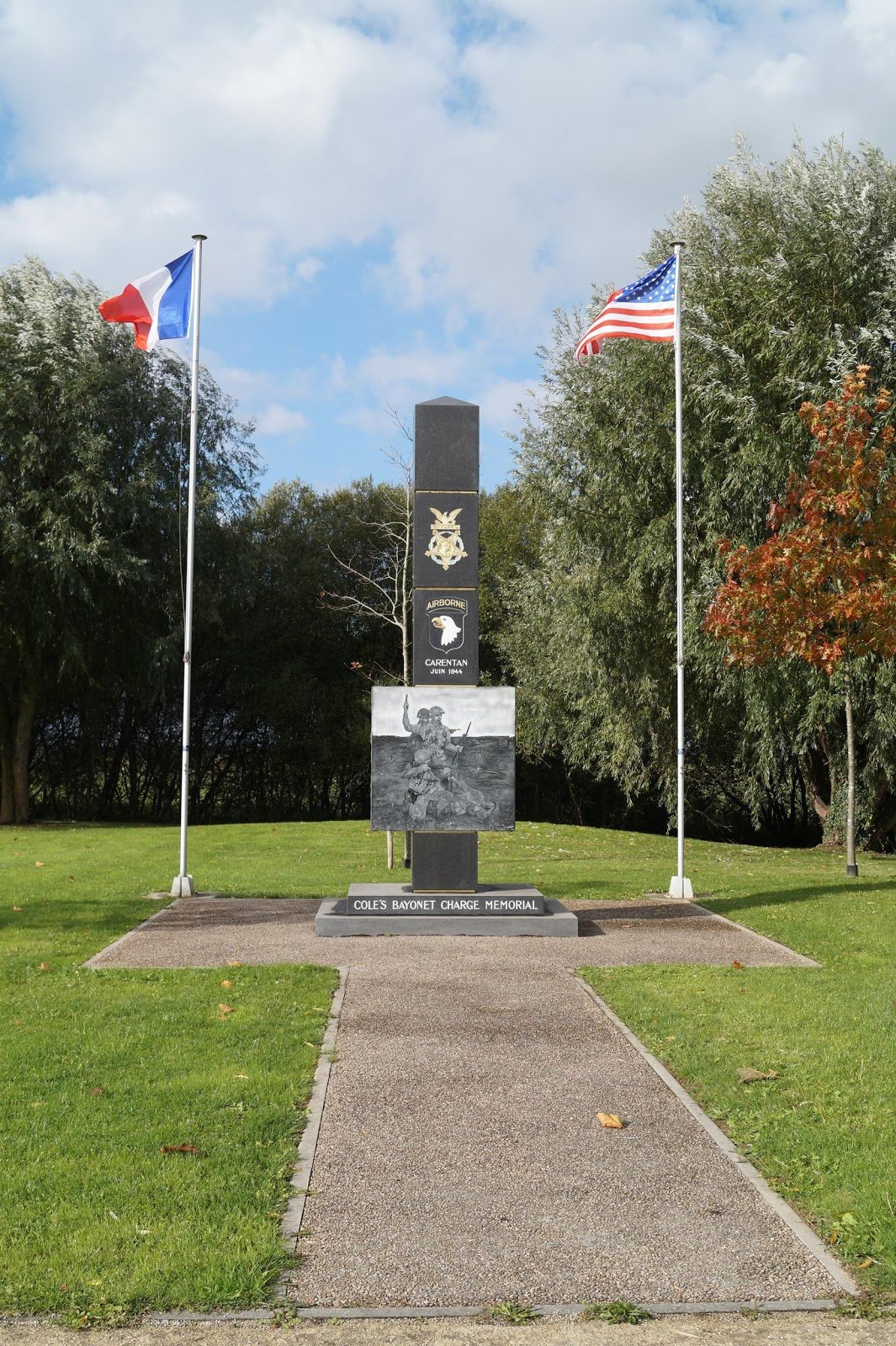
Lieutenant Colonel Cole’s bayonet charge monument
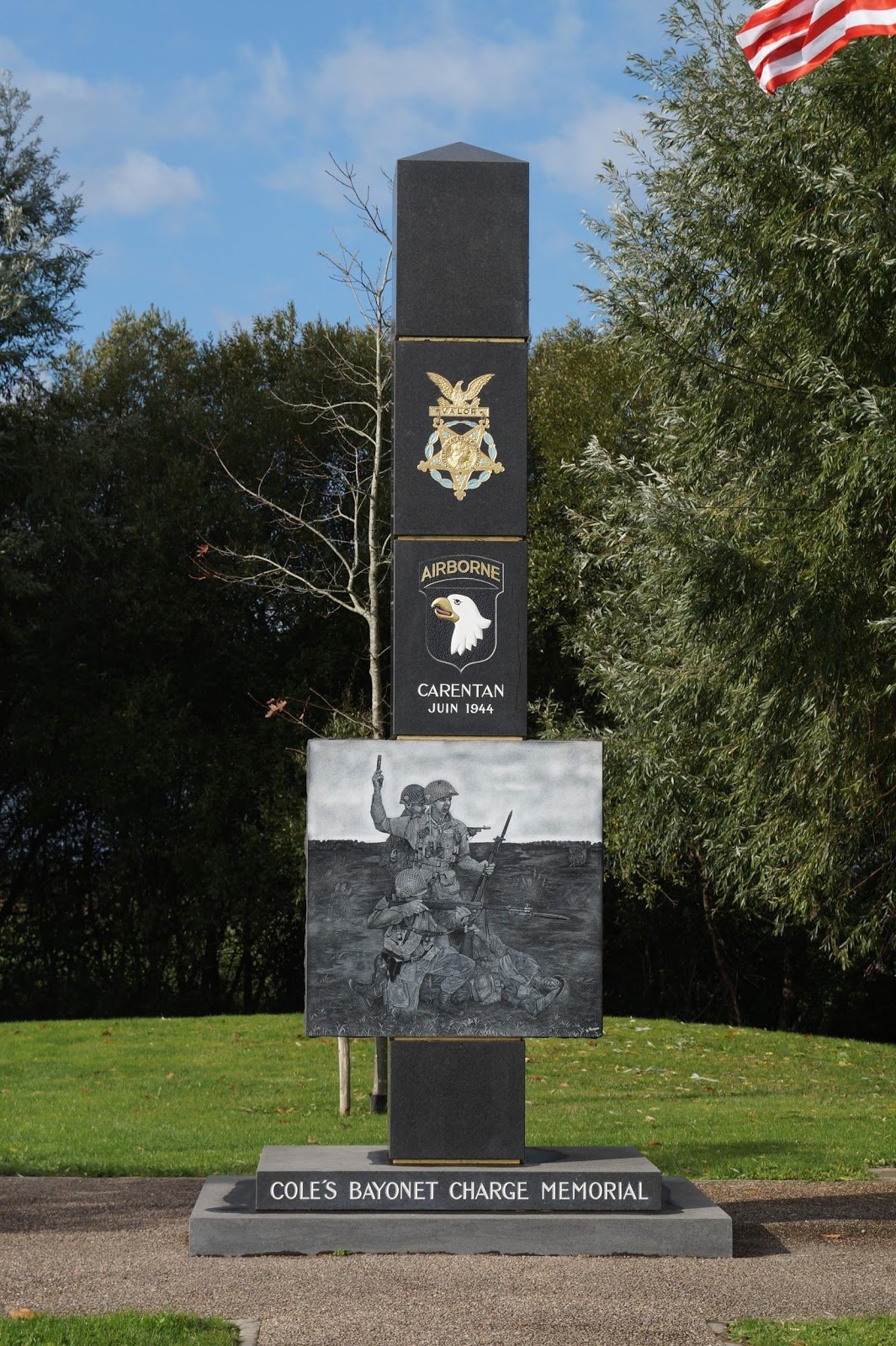
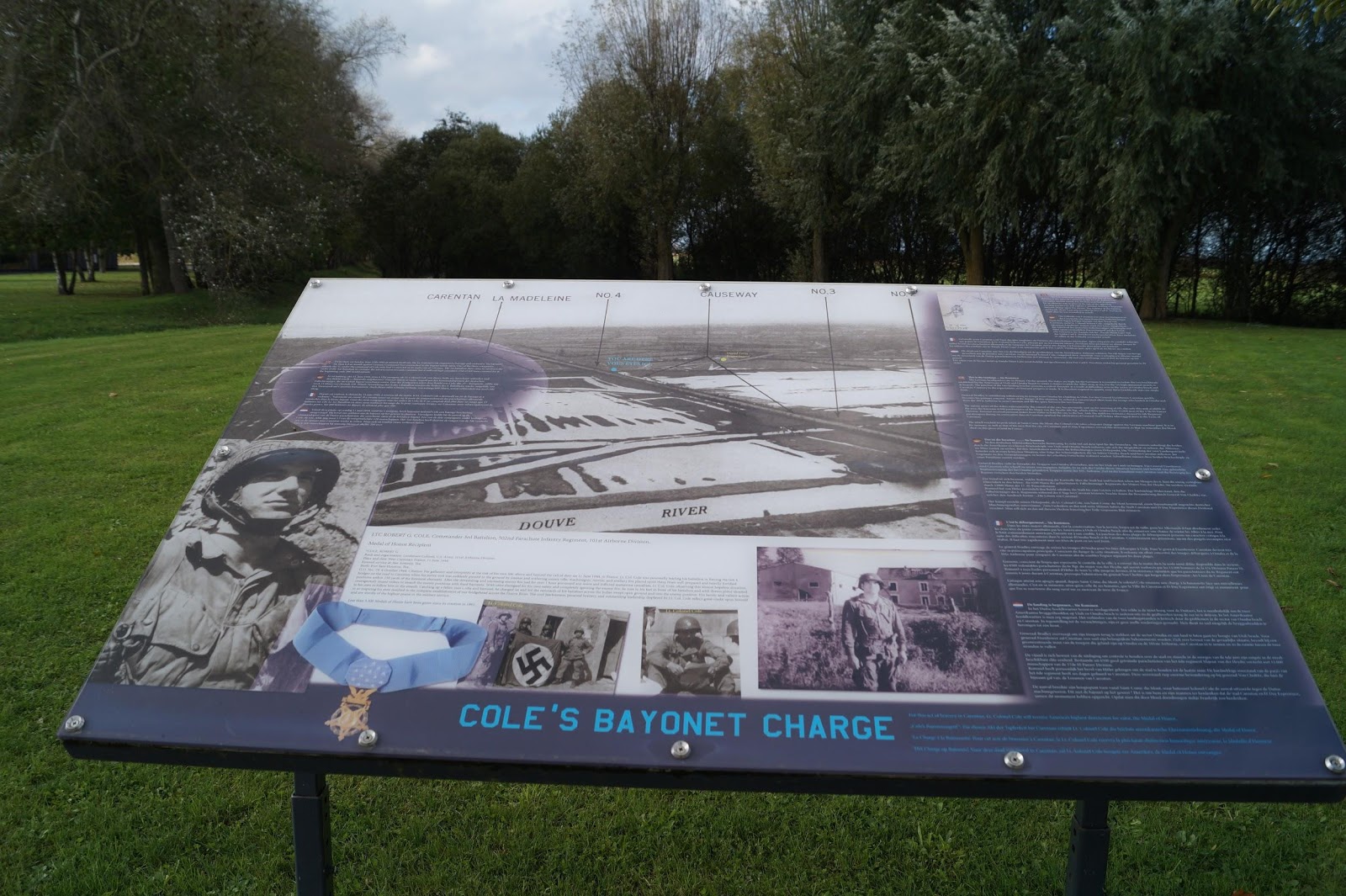
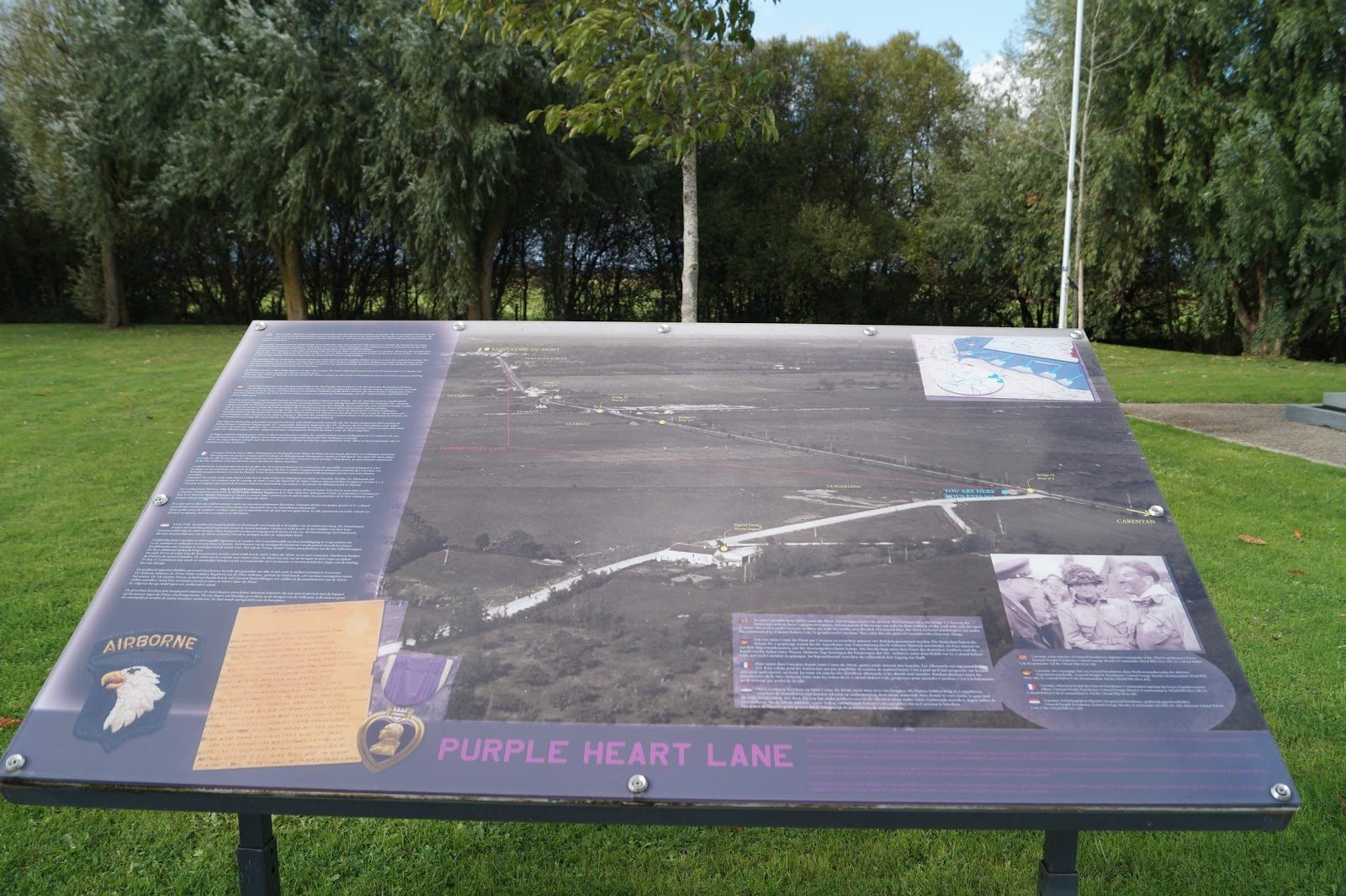
Purple Heart Lane
The Purple Heart Lane is the name given to the N13 road section between Saint Come du Mont and Carentan. This name was given due to the high number of American casualties along the N13 road.
As you all know, the Purple Heart is an American military decoration awarded for sustaining wounds in combat.
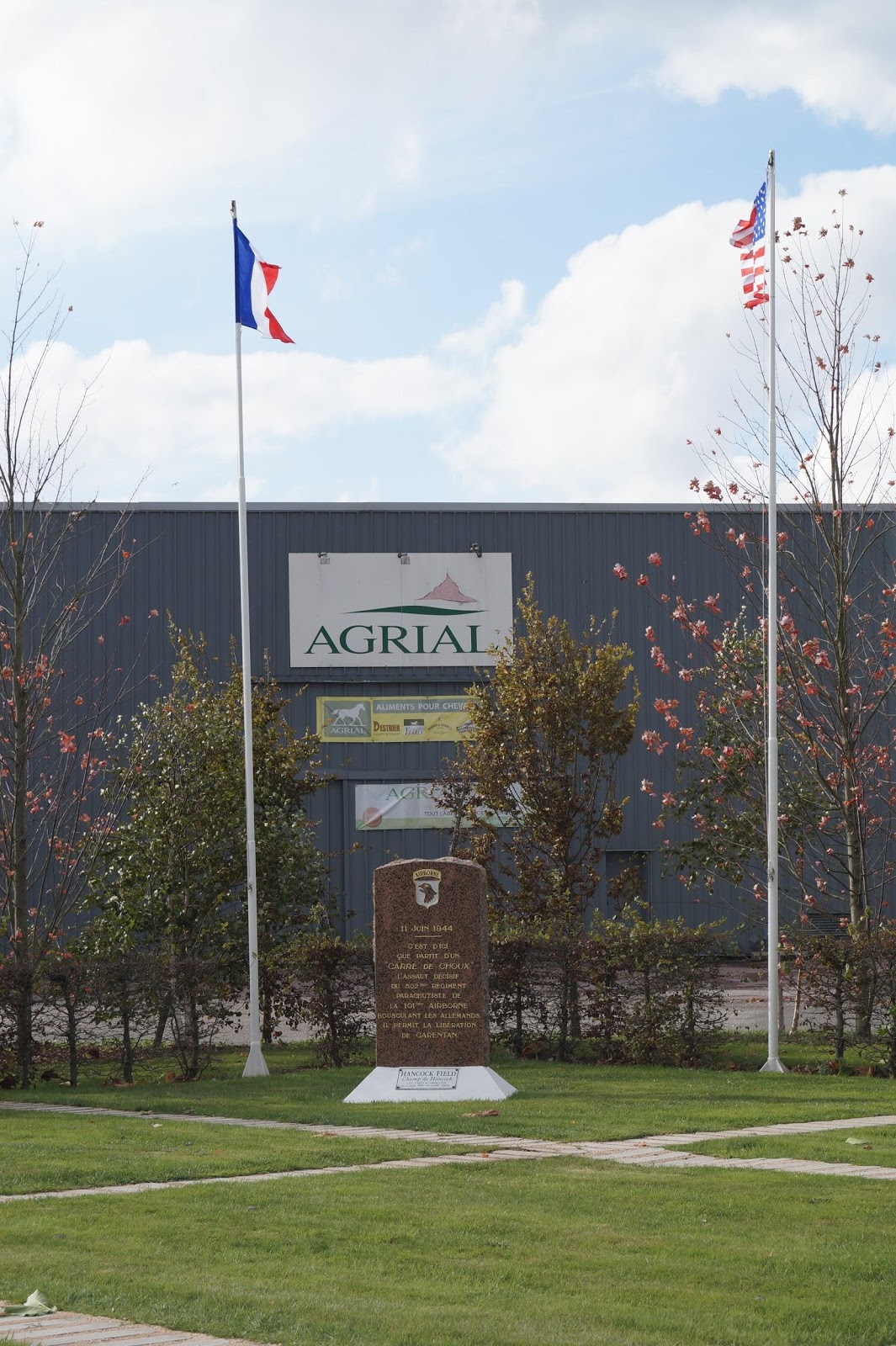
The monument of the “Carré de choux” battle in honor of the 502nd PIR 101st Airborne and Captain Fred A Hancock who led and attacked into the outskirts of Carentan.
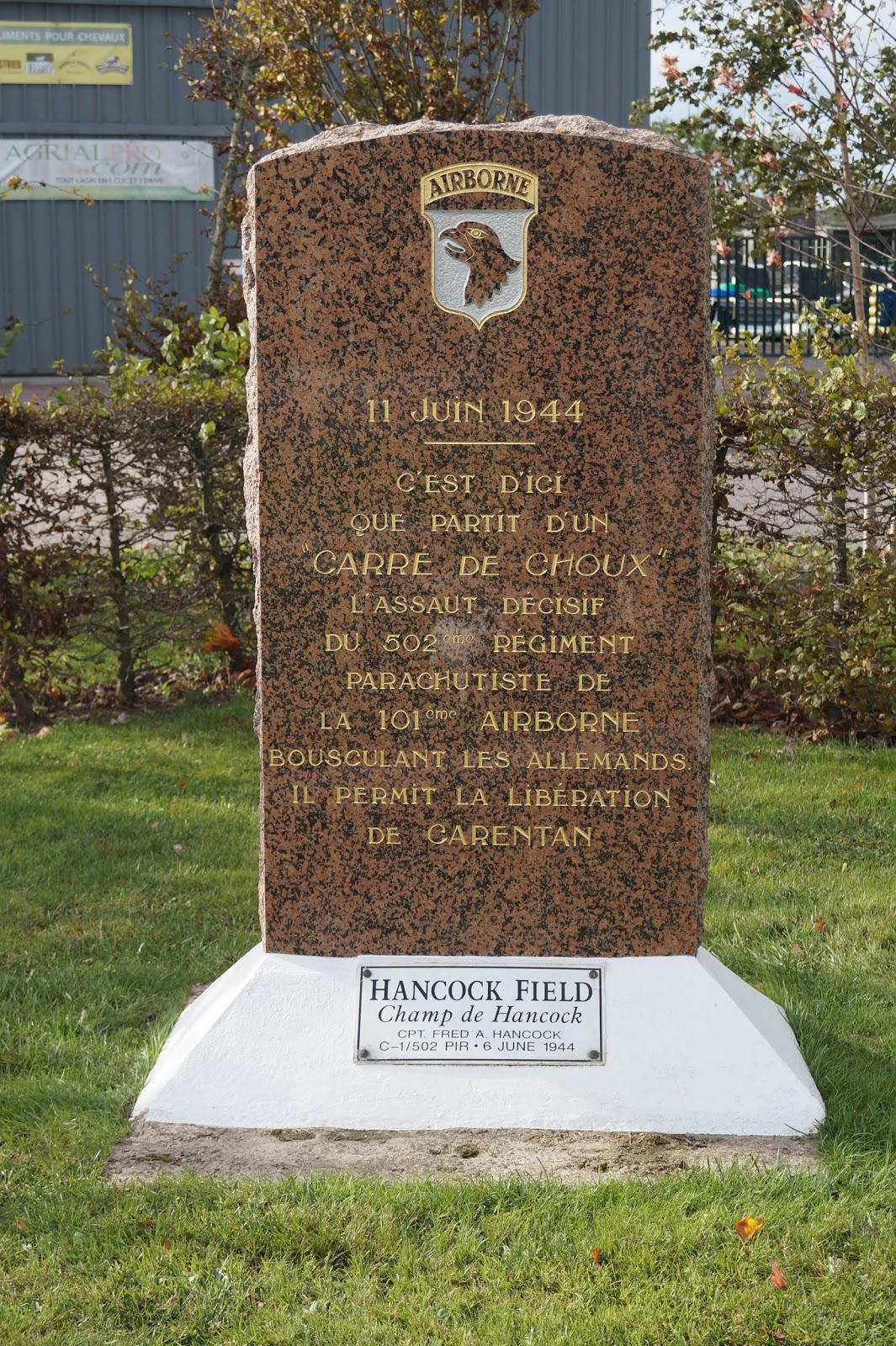
CARENTAN
The Liberation of Carentan was one of the first allied objective. Under the bombardment of June 6th the Mayor of Carentan, Doctor Caillars, and two families in their homes “rue des Villas” were killed.
The bombings also affected the Duval-Lemonnier establishments, as neighbours took the opportunity to steal the sugar stock!
The bridge and the “Barquette” lock to access Carentan and control the water level were taken as of 3:00 a.m. on June 6th by the soldiers of the 101st Airborne Division of General Taylor.
Despite the German eagerness to dislodge them, the soldiers maintained this position to allow, on June 10th General Collins to advance.
A deadly battle between the 6th Fallschirmjäger and the Paratroopers took place near the "Carré de choux" (known today as the Pommenauque industrial area). After five days of furious fighting and the loss of half of its troops, the 101st Airborne Division liberated the city on June 12th, 1944.
The liberation of Carentan, a strategic place, allowed the junction of Utah Beach and Omaha Beach.
On June 13th, a violent German counter-attack was organized, in vain, supported by the arrival of a German division of Panzer, around Hill 30, still known today as "Bloody Gulch".
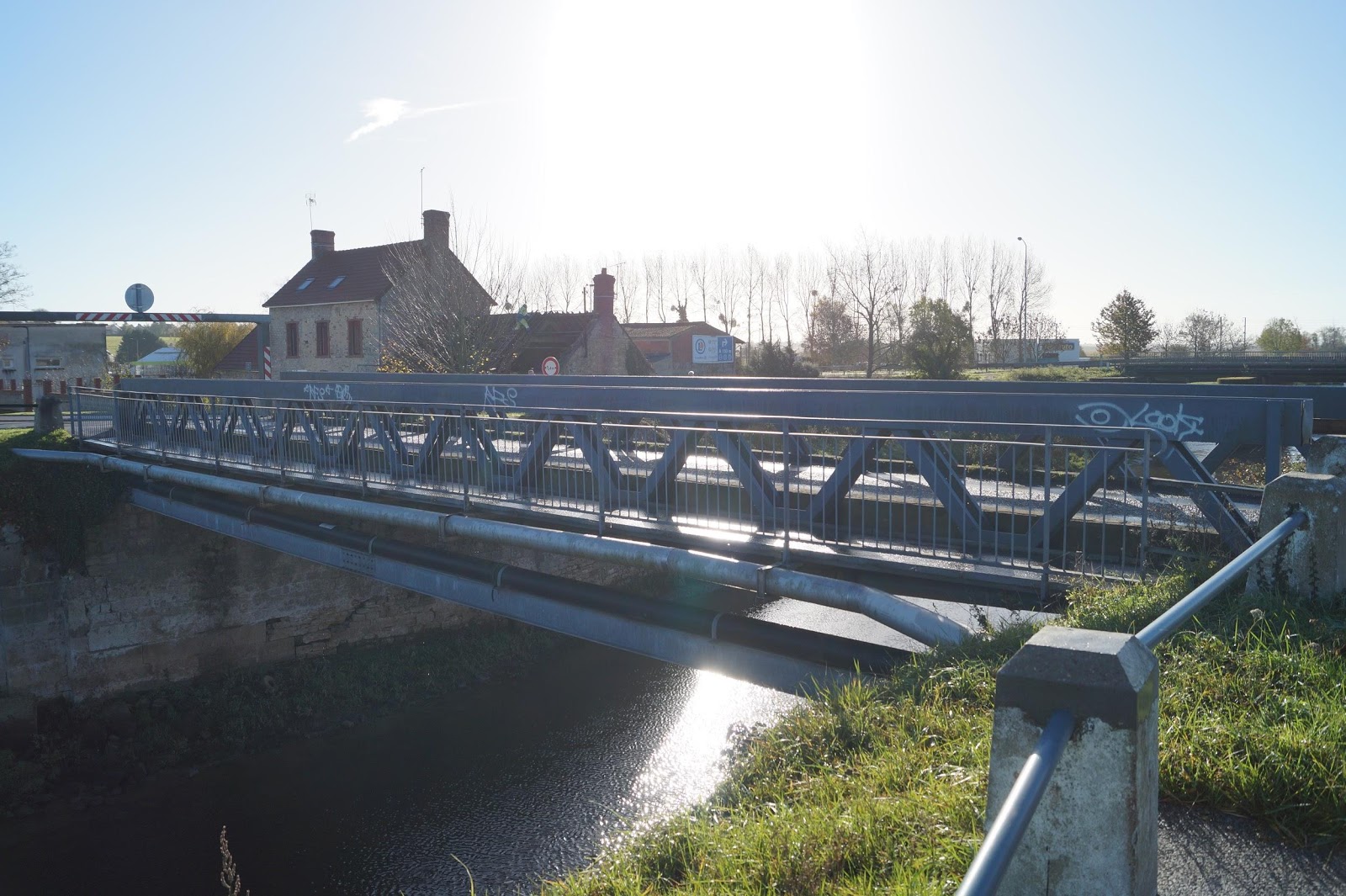
The Bailey bridge between Carentan and St Hilaire Petitville
On June 20th the 300th Combat Engineers Battalion had to rebuild a bridge, it was situated between Carentan and St Hilaire Petitville, the original one having being destroyed by the Germans. The construction of the Bailey bridge was made under enemy artillery fire. The 300th had to rebuilt some parts of the bridge constantly destroyed by artillery shells.
The Bailey bridge is a type of portable, pre-fabricated, truss bridge, made with wood and steel. It was developed by the British during the war and was also used by the Canadians and the American engineering units.
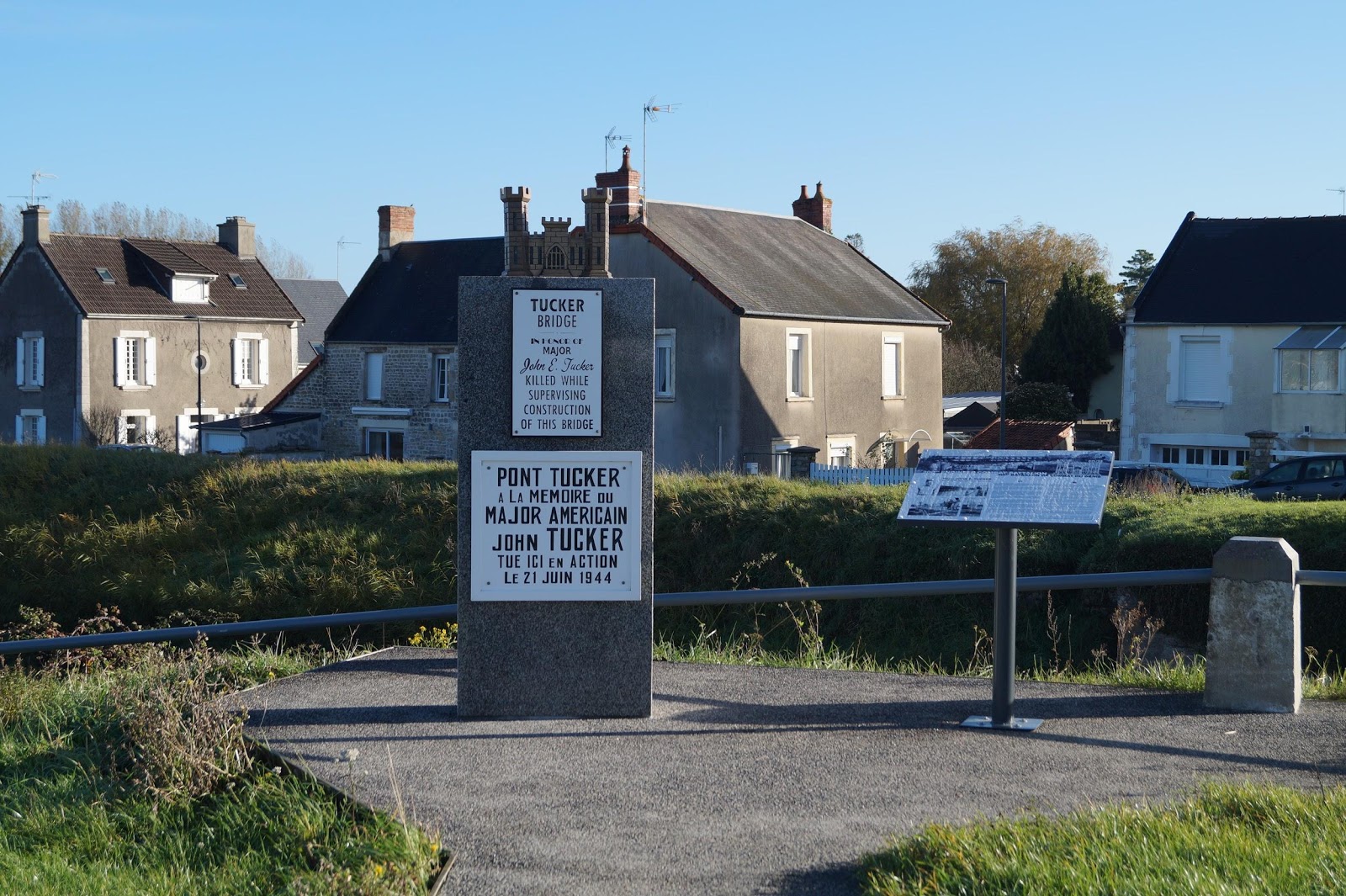
The monument in honor of Major John Tucker
On the 27th of June, Major John Tucker who supervised the advance of the work, was fatally wounded by a German 88mm shell.
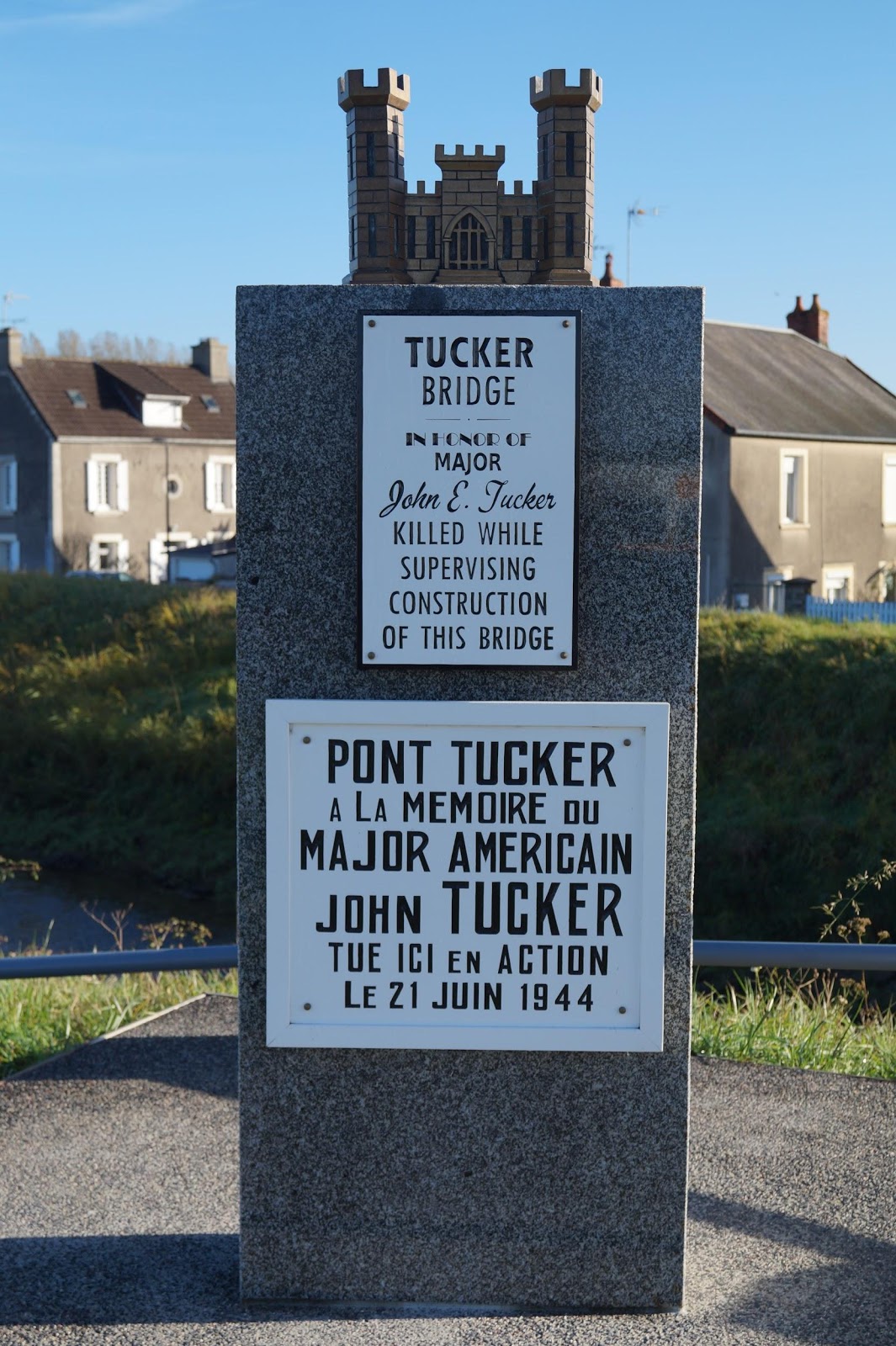
In homage to Major John Tucker, his name was given to this bridge and a monument was inaugurated on June 5th 2017.
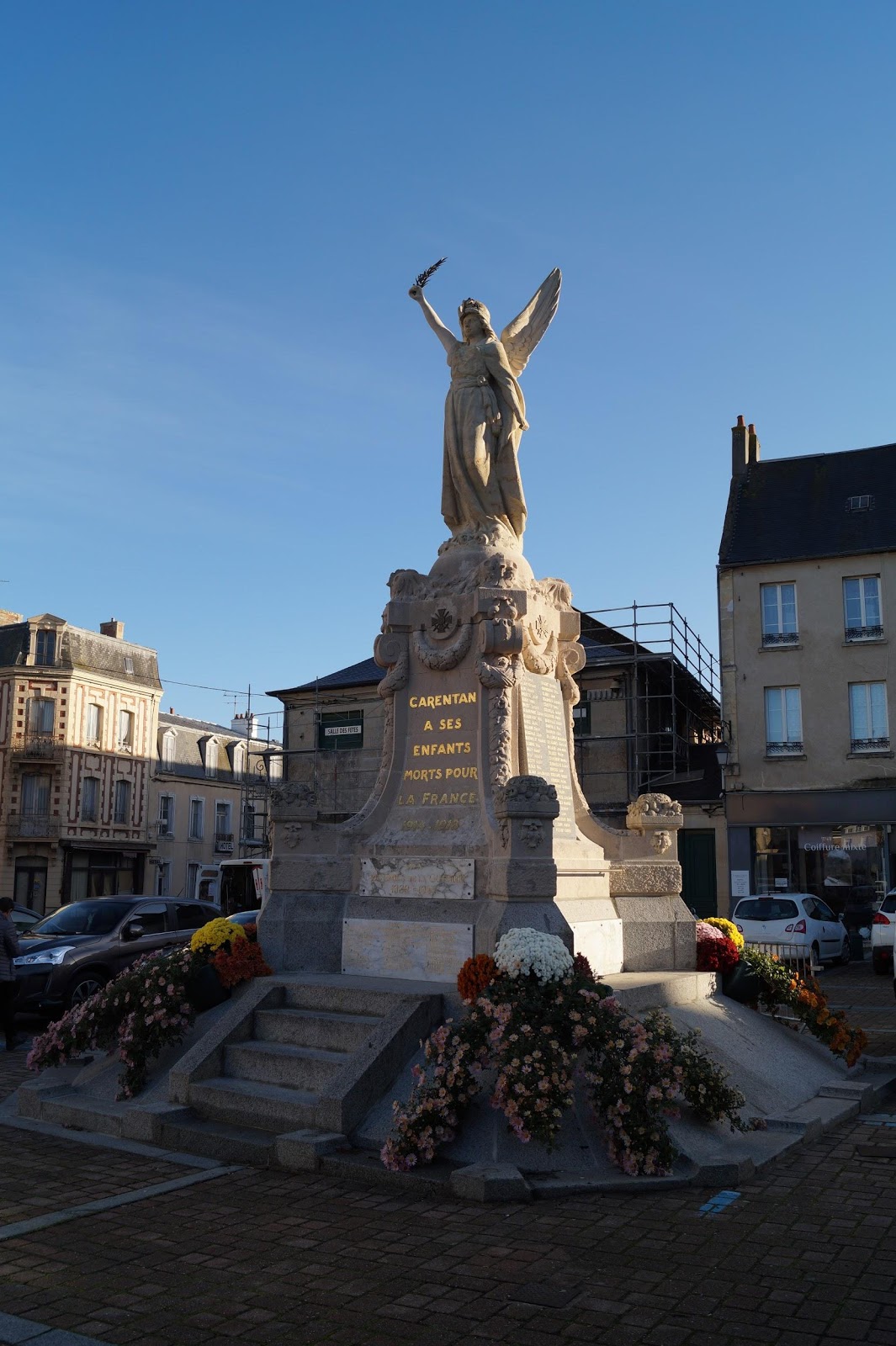
Place de la république, War Memorial
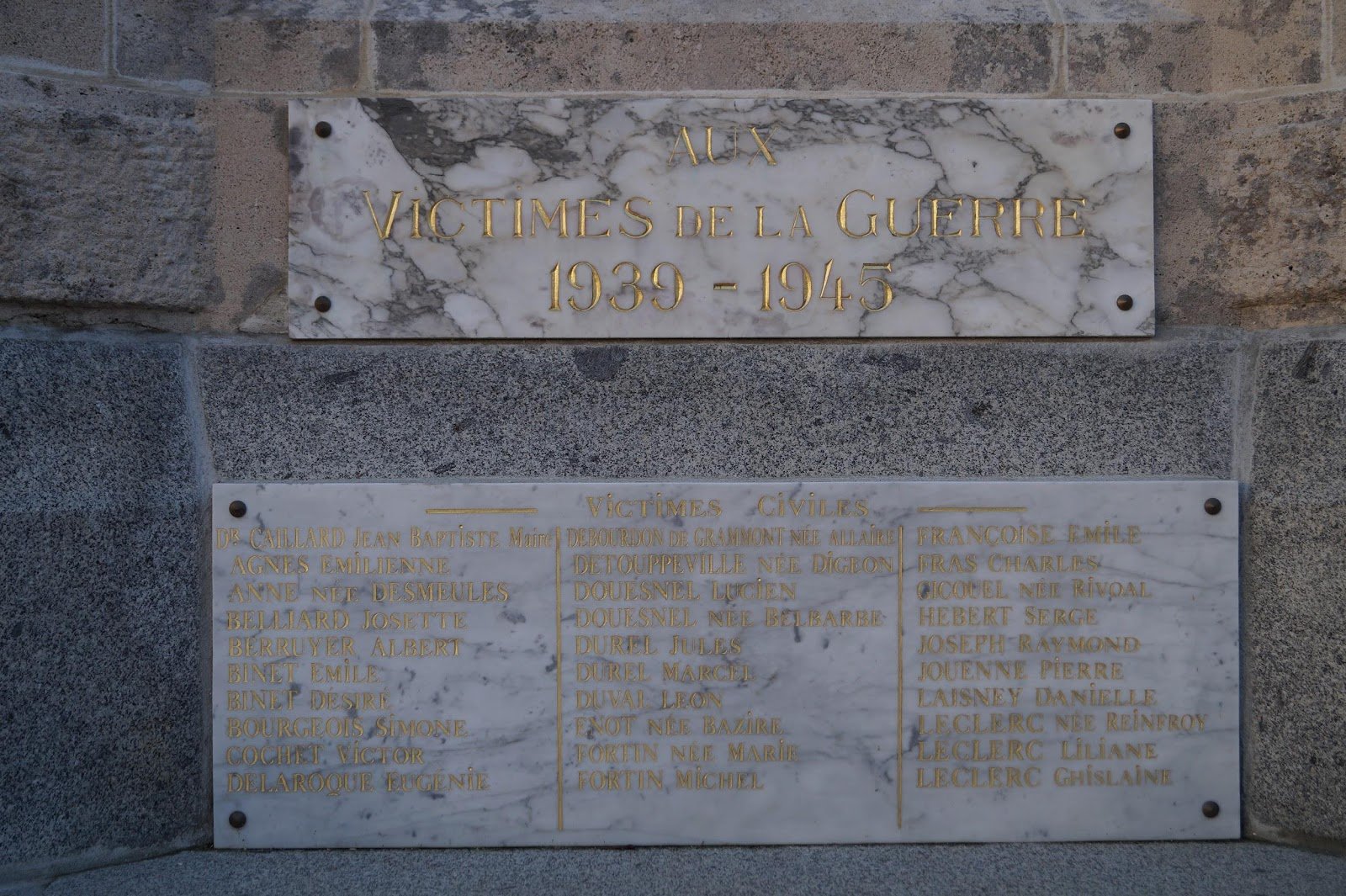
Names of the French civilian killed during WWII
On June 23rd, 1944, a ceremony was organized to award the Silver Star to some American soldiers on the “Place de la république”. Danièle Laisney a little girl, was killed tragically by a German shrapnel shell while giving a bouquet of flowers to an American officer.
She was only 4 years old....
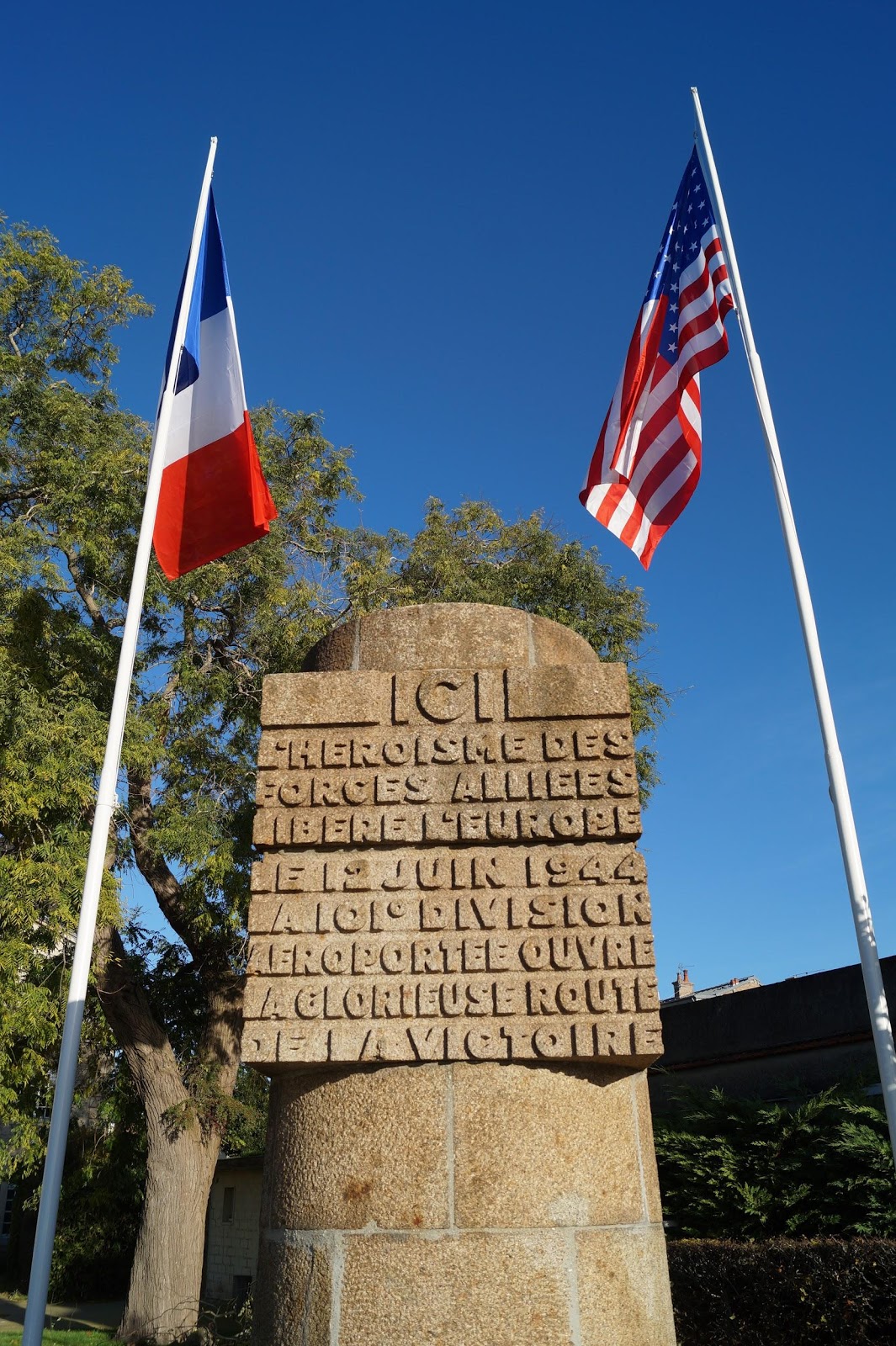
Town Hall monument to honor the 101st Airborne PIR & GIR
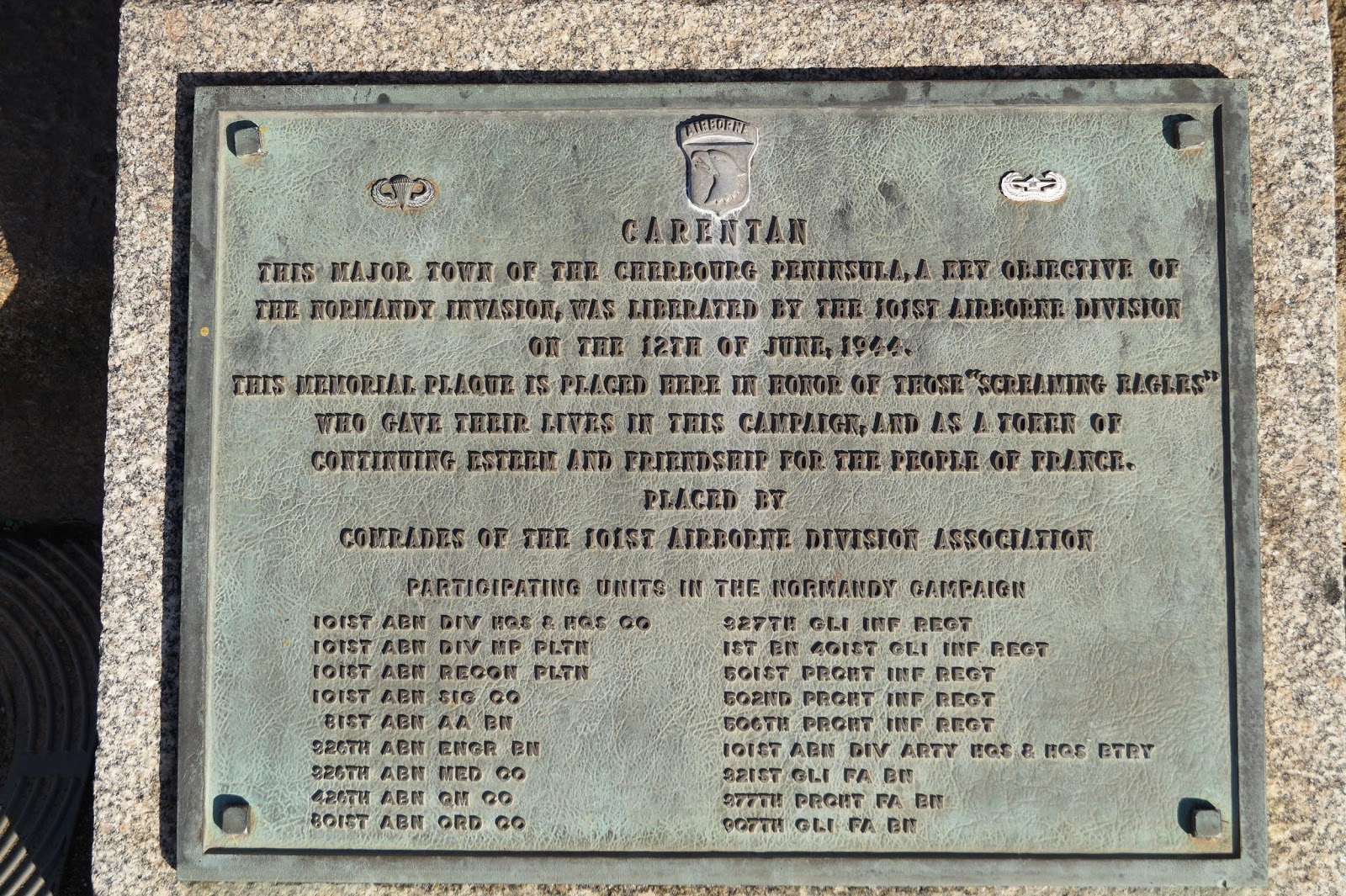
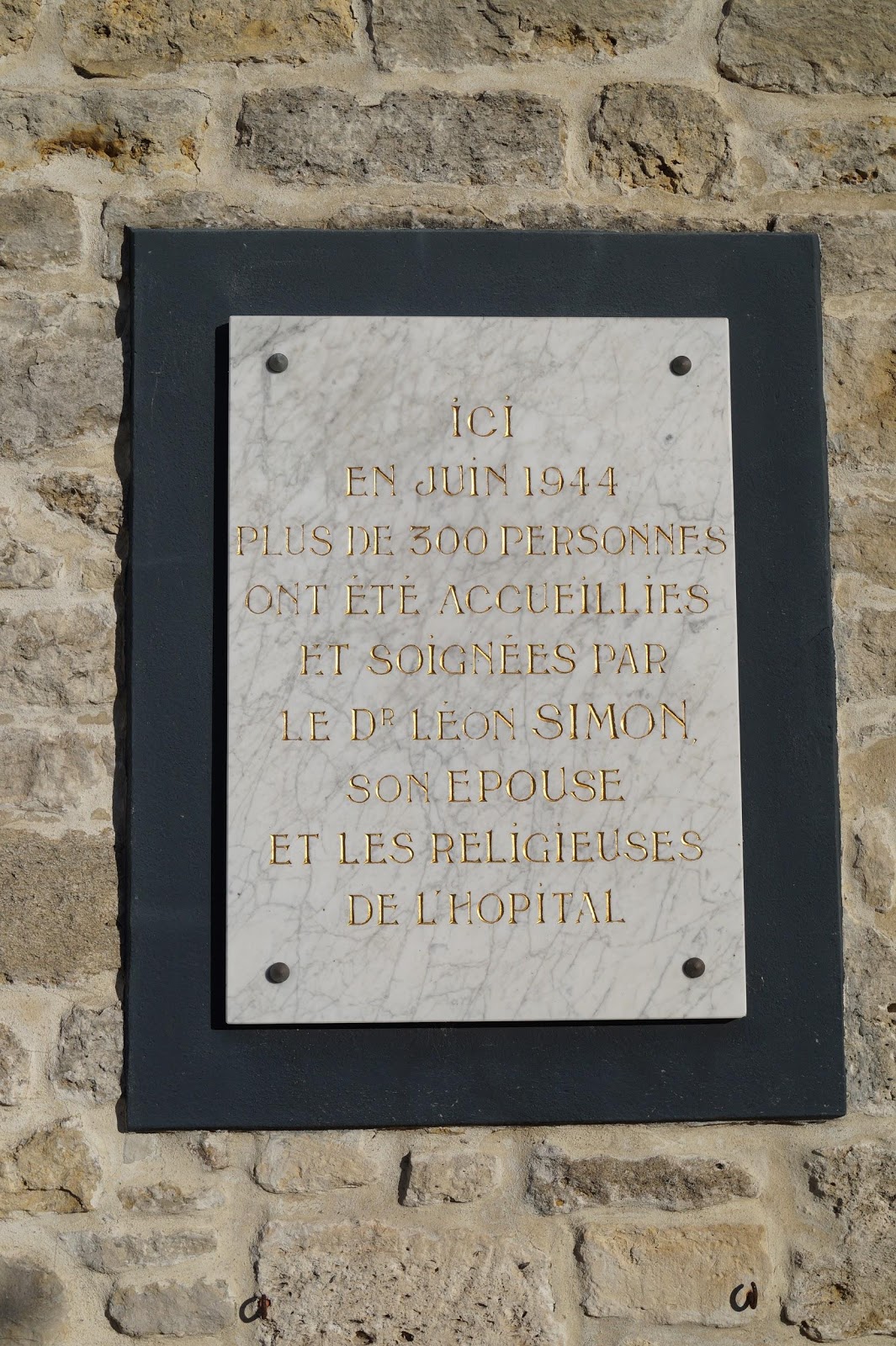
This plate was hung at the Carentan hospital to thank Doctor Simon, his wife and the Nuns for taking care of 300 wounded in June 1944
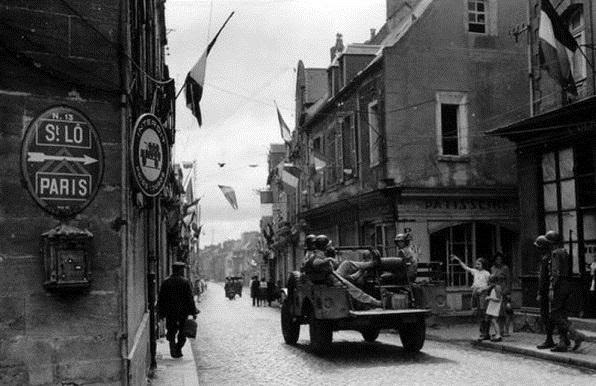
Normandy American Heroes office in Carentan is situated in the street called “Rue du Chateau” This picture was taken after the liberation of Carentan in June 1944
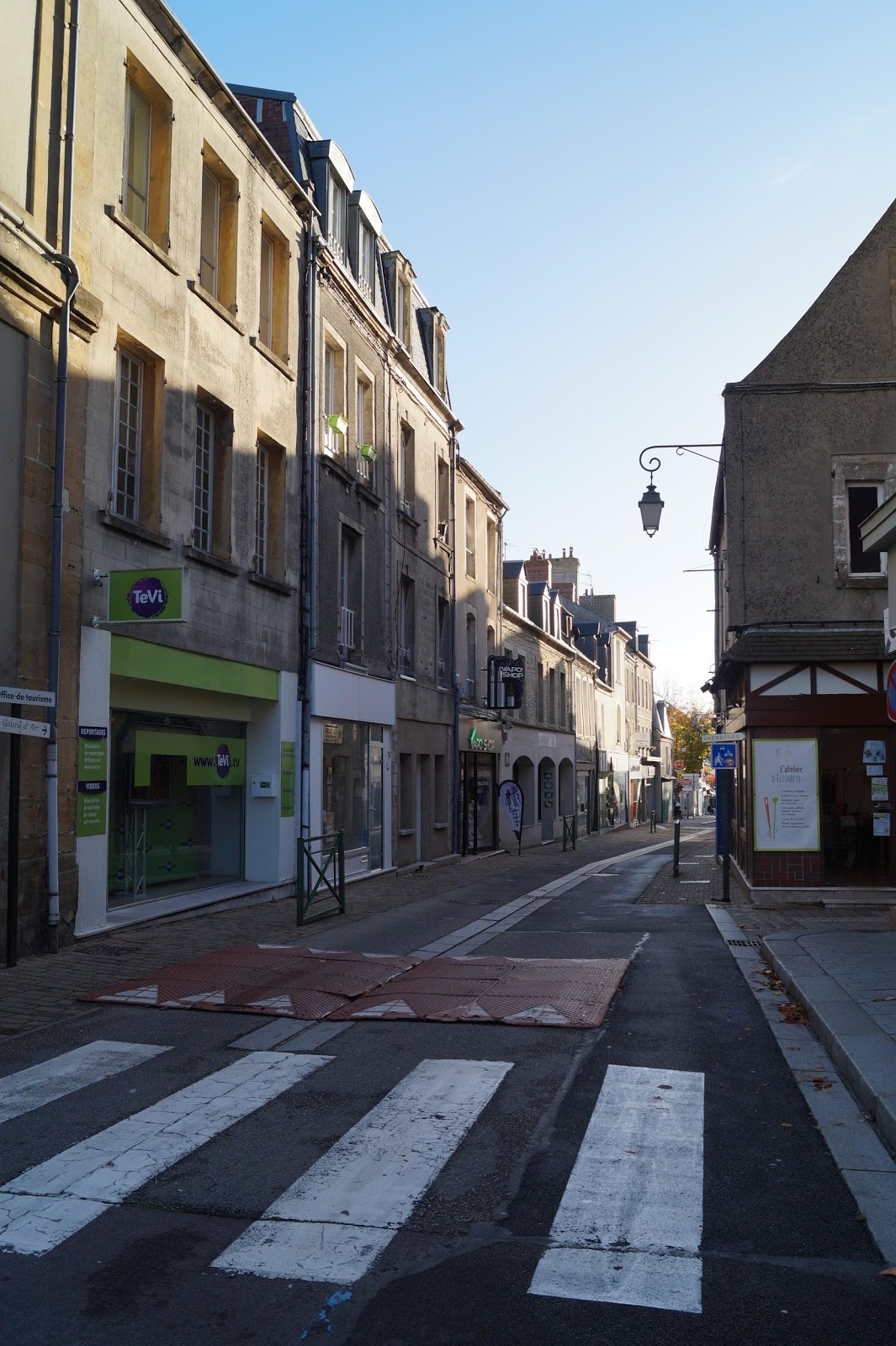
The “Rue du château” today
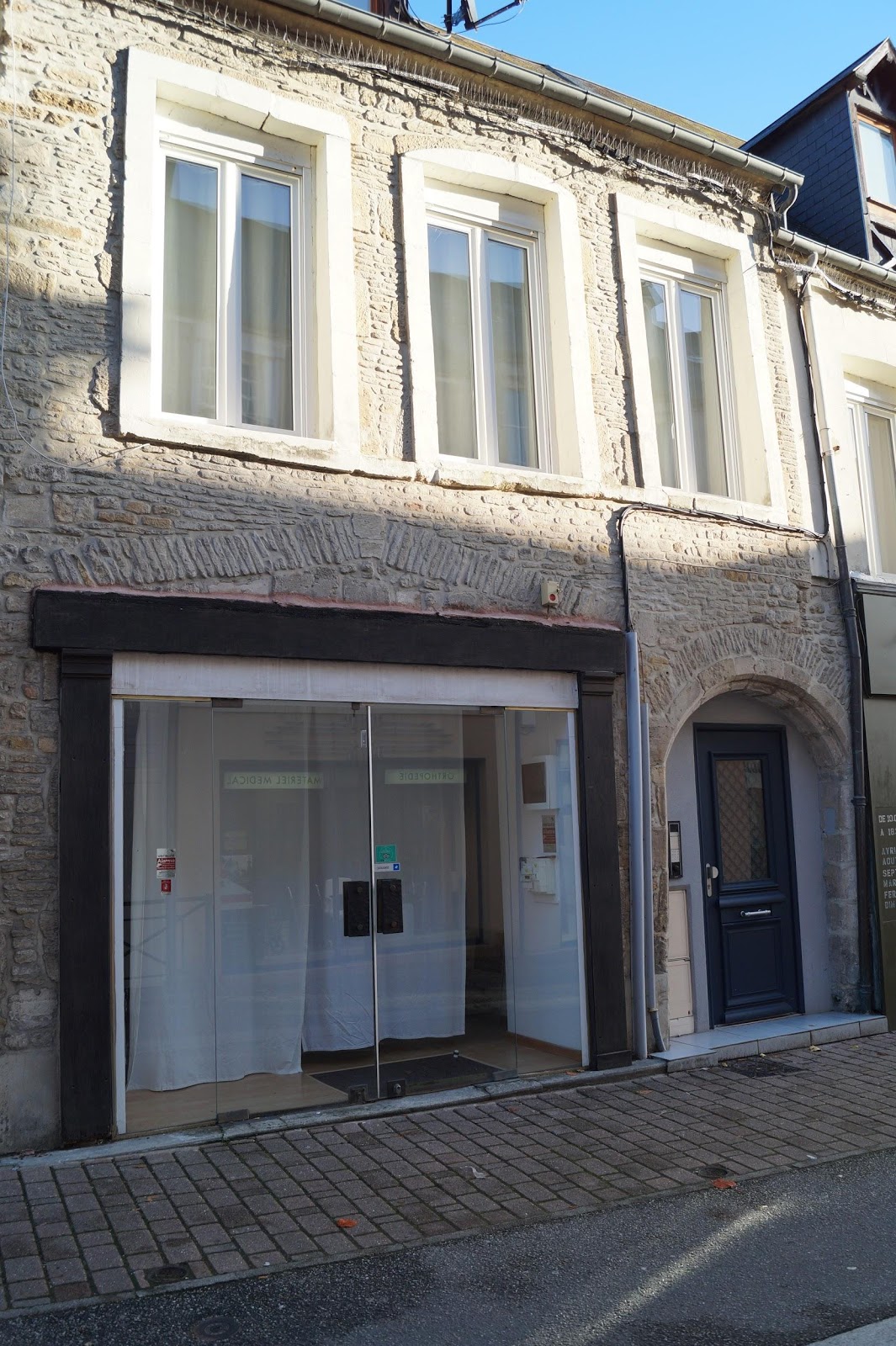
Normandy American Heroes office
13 rue du Chateau, 50500 Carentan les Marais













